FIRMS


FIRMS

By Dan Rafter, Editor
The same word comes up when developers, brokers and other professionals speak about the Omaha commercial real estate market: resilient.
Yes, the Omaha commercial real estate market isn’t immune to the challenges of higher interest rates, increasing construction costs, stubborn inflation and a shortage of skilled labor. It’s why Omaha is seeing fewer investment sales of commercial real estate assets, and why vacancy rates are up in certain sectors.
But even with a slight slowdown in leasing and sales activity, the Omaha commercial real estate market remains one of the steadiest in the Midwest. Developers are still planning new industrial facilities and office buildings. New-to-market retailers continue to target Omaha. And the market’s multifamily properties continue to fill up with renters eager to live in both downtown Omaha and its suburban communities.
What is Omaha’s secret? It’s nothing revolutionary. Developers and brokers point to the experienced development community here, the strong partnership between
the government and private sector, the continued investment in downtown Omaha and the lower cost of living and strong amenities that make Omaha such an appealing place to call home.
It all combines to make Omaha one of the most resilient of Midwest markets, even when the national economy continues to throw challenges at the brokers and developers working here.
Mike Homa, president of the Nebraska Division for R&R Realty Group, points to the Omaha-area office market as evidence of this region’s resiliency. While the office sector here has faced challenges resulting from the work-from-home movement, it’s fared far better than this sector has performed in other U.S. cities.
Homa said that the overall office vacancy rate in the Omaha market stands at a low 9%, below even pre-pandemic levels. That vacancy rate is even lower for the
OMAHA (continued on page 18)
A thriving downtown. A pro-business environment. And plenty of optimism: That’s what brokers and developers working here say sets Milwaukee’s CRE market apart
By Dan Rafter,
Editor
An adjustment period. That’s what the Milwaukee commercial real estate market is going through today.
But fortunately for the developers and brokers who work in this market, Milwaukee remains a favored destination for companies seeking headquarters and regional offices in the Midwest. The region remains popular, too, with residents, who seek out the area’s low cost




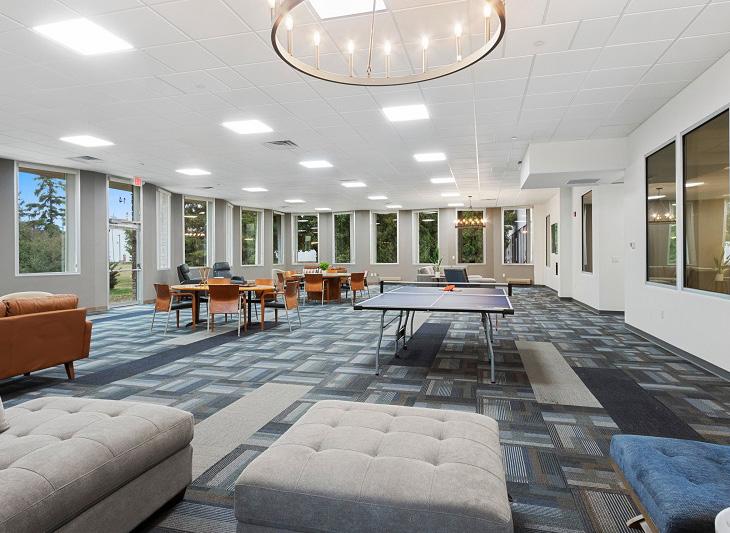
Higher interest rates, a labor shortage and soaring construction costs can’t break Omah’s CRE momentum: The same word comes up when developers, brokers and other professionals speak about the Omaha commercial real estate market: resilient.
A thriving downtown. A probusiness environment. And plenty of optimism in Milwaukee: An adjustment period. That’s what the Milwaukee commercial real estate market is going through today. But fortunately for the developers and brokers who work this market, Milwaukee remains a favored destination for companies seeking headquarters and regional offices in the Midwest.
McCarthy’s milestone in St. Louis: 609,000-square-foot facility ranks as one of largest neuroscience projects in the country: A milestone project. That’s what McCarthy Building Companies took on when overseeing the construction of a 609,00-square-foot neuroscience facility at the St. Louis campus of Washington University.
Park Place Holdings converts Kimberly Clark office property to 55-plus apartment development in Wisconsin: It takes the right property and the perfect location. But when it happens? A conversion from an office property to a multifamily development can remove unwanted space from the market and replace it with desperately needed -- and in-demand -- housing.
Demand for new student housing helps Oxford Companies close one of the richest land deals in Ann Arbor’s history: When it brokered the sale of the Galleria Mall retail center in June of this year, Oxford Companies hit an impressive milestone: The deal’s sales price stood at $18.35 million. At $33.4 million an acre, this sale represents one of the richest land deals in Ann Arbor’s history.
Champion Realty Advisors’ J.D. Salazar: Even the niche industrial service facility market isn’t immune to high interest rates and a transportation industry recession: J.D. Salazar has long understood the benefit of targeting a niche. It’s why the firm he founded, Willowbrook, Illinois-based Champion Realty Advisors, specializes in investing in and managing industrial service facilities.
Retail apocalypse? It’s not happening: Remember those dire headlines warning of a retail apocalypse? Or those news stories predicting the death of brick-and-mortar stores? Turns out, retail wasn’t nearing its end. It was just evolving.
Challenges? They remain plentiful in the office sector: The office sector in Minneapolis-St. Paul isn’t unusual today: It faces challenges.
Good news from Altus Group survey? CRE pros indicating that they are ready to buy and sell real estate again: In good news for the commercial real estate market, 80% of U.S.-based CRE professionals said in a recent survey that they expect to buy or sell property within the next six months.
WWW.REJOURNALS.COM
Publisher | Mark Menzies menzies@rejournals.com 312.933.8559
Editor | Dan Rafter drafter@rejournals.com
ADVERTISING
Vice President of Sales & MW Conference Series Manager | Ernest Abood eabood@rejournals.com
Vice President of Sales | Frank E. Biondo frank.biondo@rejournals.com
Classified Director | Susan Mickey smickey@rejournals.com
Marketing & Events Coordinator | Allison Kim Allison.kim@rejournals.com
Midwest Real Estate News brings real estate leaders together to explore the challenges and opportunities unique to their markets.
ADDRESS
1010 Lake St Suite 210, Oak Park, IL 60301 Midwest Real Estate News® (ISSN 0893-2719) is published bimonthly by Real Estate Publishing Corp., Oak Park, Il 60301 (rejournals.com). Current and back issues and additional resources, including subscription request forms and an editorial calendar, are available on the internet at rejournals.com.

By Dan Rafter, Editor
Renters looking for more space are in luck: A new report says that the average size of new apartment units in 2023 increased substantially when compared to a year earlier.
According to RentCafe’s latest apartment-size report, released in early June, the average size of a new apartment in the United States stood at 916 square feet in 2023. This is largely because developers added a greater number of two- and three-bedroom apartment units last year.
That number is a big increase from 2022, when the average size of a new apartment in the United States was only 889 square feet, largely because of the higher number of studio and one-bedroom apartments that developers added to the nation’s multifamily stock.
Where renters live, though, helps determine how large their apartment unit is likely to be.
RentCafe found that the average size of new apartments stood at 1,173 square feet in Gainesville, Florida, in 2023, tops in the nation.
The first Midwest market on RentCafe’s list was Knoxville, Tennessee, which boasted an average new apartment size of 1,057 square feet. That is 18.1% bigger than in 2013. Knoxville’s average new apartment size ranked fourth in the country last year.
Coming in at 10th place on RentCafe’s list was Louisville, Kentucky, with an average new apartment size of 1,017 square feet, 15% larger than 10 years ago. Overland Park, Kansas, ranked 17th, with an average new apartment size of 985 square feet, the only other Midwest market in the top 20.
In Minneapolis, the average size of new apartments stood at 780 square feet in 2023, while the average size of all apartments was 713 square feet. Those

numbers stood at 865 square feet and 827 square feet in Madison, Wisconsin, and 835 square feet and 788 square feet in Milwaukee.
And in Chicago? The average new apartment in 2023 boasted 801 square feet, while the average size of all apartments was a snugger 704 square feet.
When it comes to new apartment construction, Chicago is lagging behind many other big cities. A new report says that the Windy City ranked just 45th out of the 50 largest metropolitan areas in 2023 in new apartment construction on a per-capita basis.
In a new report published in early June, Apartment List said that new multifamily construction starts are falling across the country, not just in Chicago.
This isn’t surprising. Apartment List said that in 2022, building permits were issued for 707,000 multifamily housing units across the country. That’s the highest this figure has been since 1985.
But since 2022, these conditions have changed. Apartment List said that the national median rent has been declining year-over-year since last summer, and interest rates have risen to their highest levels since 2007. In response to these changing conditions, developers have begun to pull back from investing in new multifamily projects.
Reacting to these economic challenges, developers have cut back on new apartment construction. In its report, Apartment List said that in 2023, permits were issued for 591,000 multifamily units, a 16% decline compared to 2022.
Based on data through April, 2024 is on pace to see permits for 525,000 new units, which would represent another year-over-year decline of 11%.
This doesn’t mean that the country isn’t seeing the addition of plenty of new apartment units this year. This delivery boom, though, is based mostly on permits issued in 2022 or earlier.
According to Apartment List, 450,000
new multifamily units hit the market in 2023, an increase of 22% compared to 2022 and the highest level since 1987. The first four months of 2024 have seen an even sharper increase in multifamily completions, and if the current pace continues, the United States will end the year with 588,000 new apartment units.
How do other Midwest cities perform? Nashville leads the way, with Apartment List reporting that in 2023, Nashville permitted 4.7 new apartment units for every 1,000 residents. That was good for fourth among the country’s 50th largest metropolitan areas.
Louisville saw 2.9, while Columbus, Ohio, and Minneapolis both saw 2.8.
Chicago tied Memphis for 45th place, with each metro area seeing 0.7 new permitted apartments for every 100,000 residents. Trailing Chicago were Detroit and Cleveland, both of which saw just 0.5 new permitted apartment units for every 1,000 residents.


By Dan Rafter, Editor
Amilestone project. That’s what McCarthy Building Companies took on when overseeing the construction of a 609,00-squarefoot neuroscience facility at the St. Louis campus of Washington University.
Plenty could have gone wrong with this project. Construction started in 2020 during the height of the COVID19 pandemic. McCarthy faced supply chain issues and labor shortages. The
price of materials had soared. And the project was a large one, one that would tax the abilities of construction managers even if a pandemic wasn’t sweeping the country.
But today? Those challenges have long been overcome. And McCarthy Building Companies recently celebrated the opening of the Jeffrey T. Fort Neuroscience Research Building for Washington University School of Medicine in St. Louis.
The secret of McCarthy’s success? Plenty of planning combined with a willingness to pivot when supply disruptions threatened to knock the project off schedule.
And officials with Washington University are looking forward to the positive impact that this project will bring to the region.
“The Fort Neuroscience Research Building will allow us to increase our impact,” said Steven Sobo, execu-
tive director for strategic projects at Washington University School of Medicine. “Importantly, Washington University intends to capitalize on our neuroscience research for commercialization and innovation to bring new treatments to patients and to lower the cost of health care. As we move forward, the Saint Louis region can become a hub for new neurotechnology companies.”
Designed to boost the research of Alzheimer’s disease and brain tumors, the
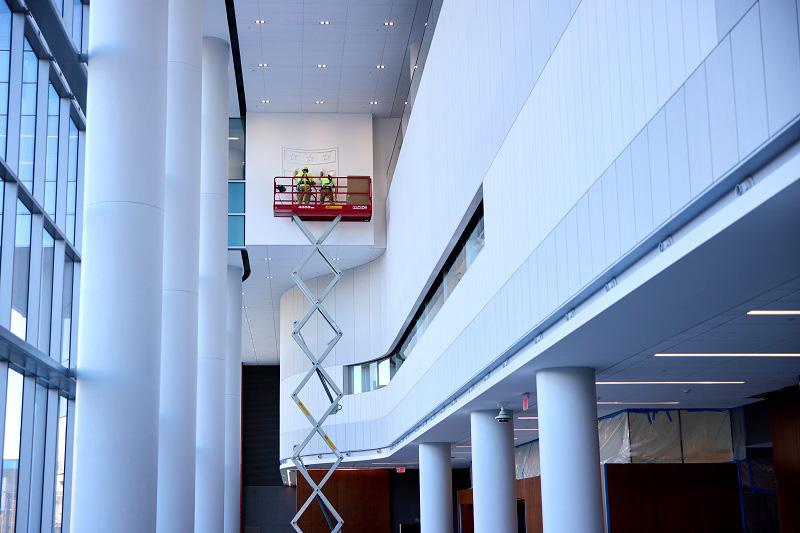
facility currently accommodates 1,000 faculty and staff members, including 95 research teams. The facility is flexible, though. Washington University can build out enough square footage in the future to accommodate another 350 faculty and staff members, including about 145 research teams.
The $616-million, 11-story, 609,000-square-foot facility is one of the largest neuroscience buildings in the world. In addition to McCarthy, which oversaw construction, the team behind this project included the architecture firms of CannonDesign and Perkins+Will.
Located at 4370 Duncan Ave., the building is located within the Cortex Innovation District on the eastern edge of the Washington University School of Medicine medical campus.
When construction began in the spring of 2020 in the early days of the COVID19 pandemic, the project immediately faced several challenges, including labor and supply chain concerns. Despite this, the team kept the project
“Washington University intends to capitalize on our neuroscience research for commercialization and innovation to bring new treatments to patients and to lower the cost of health care.”
on budget and on schedule. Effective pre-project planning and the use of sophisticated lean construction techniques contributed to the project’s ultimate success.
“Early collaboration played a pivotal role in the success of this project,” said Andy Poirot, Vice President and Project Executive at McCarthy Building Companies, Inc. “We successfully realized the client’s vision, delivering a cutting-edge research facility poised
to enhance lives for generations to come.”
After breaking ground, the teams working on this project were directed to work from home, with the exception of the onsite builders, Poirot said.
This was a challenge. But McCarthy’s team members quickly adapted.
“While learning to work remotely, we also quickly advanced our electronic
planning and meeting methods,” Poirot said. “Ultimately, we were able co-locate with the design-assist teams in a thoughtful way and were able to advance the design to stay ahead of construction because of our strong relationships with our trade partners.”
Site logistics also were challenging, Poirot said. To meet the final comple-
HEALTHCARE (continued on page 10)
HEALTHCARE
(continued from page 9)
tion date, the garage, link and building all had to be built concurrently, requiring the entire team to work together creatively. In addition, both the building and garage footprints grew through design development to maximize project site build-out/utilization. On-site laydown area was extremely scarce.
Poirot said that about 90% of the mechanical, electrical and plumbing systems were prefabricated and pre-tested in several local prefab shops before they were delivered to the jobsite for installation. Detailed 3D modeling and early coordination enabled team members to understand the spatial constraints and generate fabrication drawings they could follow in the shop.
McCarthy also used Takt planning to determine the numbers of craft professionals needed to complete the project and manage peak manpower needs. Takt planning is a lean construction scheduling tool that visually documents all work activities scheduled to take place every week throughout the project’s duration. Takt planning helped accelerate the installation of mechanical and electrical system components, which represented the largest scope of work in the research building.
Because construction took place during the pandemic McCarthy faced long lead times for materials. It even dealt with plant shutdowns, making it especially challenging to get some materials to the site.
Again, careful planning and scheduling allowed McCarthy to work through these challenges, Poirot said.
“McCarthy worked with our design partners to complete sections of design necessary to finish on time,” he said. “AHUs, electrical gear, stainless steel, they all had long lead items that could have impacted the project.”
Sharp cost increases sometimes required McCarthy, the design team and Washington University School of Medicine to be flexible and consider changing products.
“The team worked together to make sure we were able to hold the budget throughout the project,” Poirot said.
“McCarthy is continuing to see a growing demand for life-science facilities. Many institutions are investing in these facilities to attract researchers and the accompanying grant funding. We expect this trend will continue as research becomes more specialized.”
The facility is made up of a research building and an 1,846-vehicle parking structure equipped with bicycle racks and electric-vehicle charging stations. A 1,000-square-foot elevated pedestrian connection spans 360 feet, linking the new building to an existing parking garage and surrounding structures to maintain campus connectivity.
Additionally, a two-story, 24,775-square-foot utility plant was constructed, one that houses five 1,250-ton chillers, five cooling towers and two 3,000-kilowatt emergency power generators.
In addition, the building’s façade, featuring a unitized curtain wall, was also prefabricated. This includes 141,707 square feet of grey unitized metal wall panels accented with customized Washington University-red metal panels. The north elevation curtain wall comprises 57,142 square feet of high-performance Low-E coated vision glass, custom color spandrel glass and 16,454 square feet of ultra-clear lowiron glass for the dramatic three-story high lobby wall.
The project is designed to achieve LEED Gold certification, focusing on reducing energy, noise and the overall carbon footprint.
While this was an important project, Poirot says that he expects McCarthy to take on several new life-sciences jobs in the future. The demand for
these facilities is only rising, he said.
“McCarthy is continuing to see a growing demand for life-science facilities,” Poirot said. “Many institutions are investing in these facilities to attract researchers and the accompanying grant funding. We expect this trend will continue as research becomes more specialized.”
Sobo said that the project’s open lab design fosters interaction between researchers. This creates opportunities for collaboration and helps researchers form new perspectives, he said.
With neuroscience, aging and brain science as the primary areas of research, the Jeffrey T. Fort Neuroscience Research Building brings together research teams from across the university, including moving labs from 11 building locations that had previously been organized by department instead of research theme. The new facility allows Washington University to bring together teams in one location for research synergy and collaboration in neuroscience.
“This melting pot of ideas will generate new discoveries and innovations for our patients and the broader community,” Sobo said.
Sobo said that key areas on each floor of the facility are designated for specific purposes to encourage collaboration. Researchers from multiple labs
will perform experiments side-by-side in these areas, a setup designed to maximize cross-lab communication and collaboration. Smaller rooms with shared equipment for specialized scientific techniques encircle the central research areas on each floor.
Researchers will use ultra-low temperature (ULT) freezers to store chemicals, enzymes, bacteria and other samples. About a third of the laboratories in the facility will have the most energy efficient ULT freezers on the market, which use only half the electricity of standard ULT freezers. An average ULT freezer consumes as much energy as a single-family home.
In addition, labs are designed to be open, flexible and fluid, allowing for expansion and contraction between the sciences and themes as well as long term space flexibility, Sobo said.
The project at Washington University is just one of many new life-science facilities rising across the country. The demand for these projects is increasing, and the trend doesn’t look likely to slow soon.
“Research infrastructure is aging across the country, and some of the demand is driven by the need to replace these buildings,” Sobo said. “Additionally, the new prevalence of collaborative, team science and the rapid introduction of new research technologies has created demand for state-of-the-art buildings like the Fort Building.”

By Dan Rafter, Editor
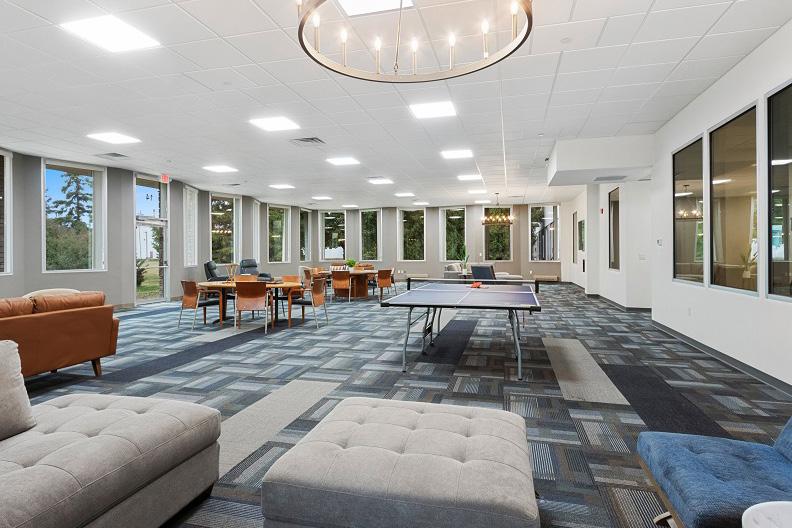
It takes the right property and the perfect location. But when it happens? A conversion from an office property to a multifamily development can remove unwanted space from the market and replace it with desperately needed -- and in-demand -- housing.
That’s what happened earlier this year in Neenah, Wisconsin.
Park Place Holdings, a De Pere, Wisconsin-based commercial real estate investment firm, completed its transformation of a former Kimberly Clark office building into Marathon Flats, a 55-plus apartment community.
Park Place holdings in July is schedued to complete Phase II of the project, delivering an additional 30 units. Once this phase wraps up, Marathon Flats will
offer a total of 61 residences designed for older adults.
Getting to this point did take time, though. That’s not surprising. While conversions seem like a good way to remove underperforming and outdated office space from the market, adaptive reuse projects are rarely simple jobs.
“Conversions are not impossible, but
they are often close to it,” said Corey Vanevenhoven, director of development for Park Place Holdings and the project manager of Marathon Flats. “Only about one in every 10 office buildings work for a conversion. Usually, the numbers don’t pencil out and it makes more sense to focus on ground-up construction. But this property was one of those rare ones in which a conversion did make sense.”

Park Place Holdings began its work on Marathon Flats in June of 2022 with initial city meetings, rezoning requests and approvals. The company then acquired the building in August of that same year. Park Place purchased the 148,000-square-foot single-story office building from Kimberly Clark Commercial LLC for $3.75 million, equal to $25.34 a square foot.
Park Place Holdings completed Phase I of Marathon Flats in November of 2023. The company decided to begin the second phase of construction after the successful lease-up of Phase I. Demand was strong for the 55-plus housing units.
Marathon Flats includes studio, one-bedroom and two-bedroom residences. One-third of the property remains dedicated to office space for Kimberly Clark.
What made this property such a good choice for a conversion to housing for seniors? The Kimberly Clark property was only one story. That made this an ideal fit for older adults who might face mobility challenges.
That doesn’t mean that the conversion was simple. As Vanevenhoven says, Park Place Holdings had to completely redistribute the property’s electrical and plumbing systems. This was necessary to ensure the safety of residents.
In addition to the property itself, the location was a good fit, too. Marathon Flats is close to the highway, which makes it easier for visitors and residents to reach the property, Vanevenhoven said. It also sits on the edge of an industrial park. This means that Marathon Flats is surrounded by 20 acres of green space, something that makes the property an attractive one for residents.
The development is also next to a Neenah police station. That doesn’t mean guaranteed safety for residents, but it does provide reassurance to residents who might be worried about crime, Vanevenhoven said.
Park Place Holdings was creative with amenities, too. The property features two outdoor courtyards with gas grills, outdoor furniture and outdoor kitchen areas. Marathon Flats offers golf simulators and an infra-red sauna. Residents can also take advantage of an indoor community room, yard games and a fitness center. Security cameras monitor the property.
The apartment units come with inunit washers and dryers, air-conditioning, dishwashers and insulated double walls for privacy.
Vanevenhoven said that demand has been strong since Marathon Flats began welcoming residents last November.
“We had a goal with our lender to get to a certain number of phase-1 units leased up. Opening in November is not the ideal time to do lease-up. But we hit that number within about five months,” Vanevenhoven said. “We have about 10 of our second-phase units leased up already. Lease-up is going extremely well.”
Vanevenhoven said that Marathon Flats hits a certain niche. The property is not low-income housing and it’s not high-end, luxury housing, either.
“We are not creating luxury housing with granite countertops,” he said. “But everything is new and fresh. It is very appealing to seniors. There is no one above or below them. People
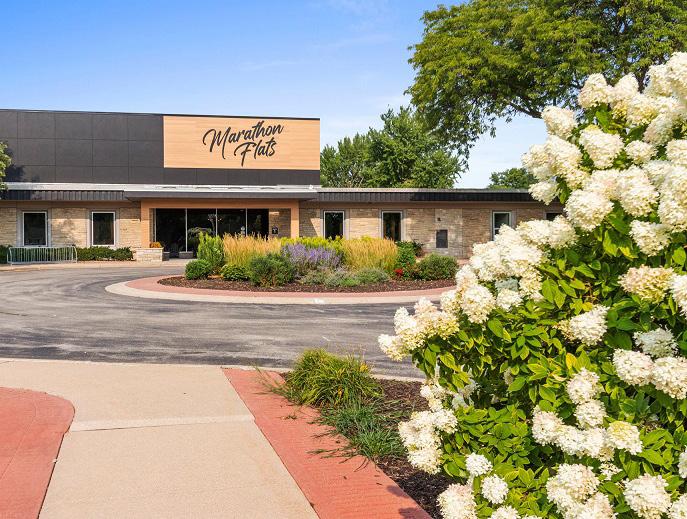
are moving here because they want quality and they want a peaceful place to live. They don’t want to deal with maintenance. We feel like we are serving a wide group of people with this project.”
Park Place Holdings has even managed to sell an undeveloped corner of the property to the Blys & Girls Clubs of Fox Valley. Vanevenhoven describes this as a win for everyone: The Boys & Girls Club gets an ideal location for a community center that
will serve the area while Park Place Holdings recovers a bit of the money that it invested in developing Marathon Flats.
“Marathon Flats represents more than just a redevelopment endeavor,” said Caleb Hayes, chief executive officer and founder of Park Place holdings, in a statement. “It’s about creating spaces that enhance the quality of life for residents and contribute positively to the fabric of our local communities.”
As a national contractor, we know that EVERY COMMUNITY IS UNIQUE
That’s why we’re committed to investing in local resources and expertise. No matter where we build, our objective remains the same—to build safe and affordable housing that residents are PROUD TO CALL HOME
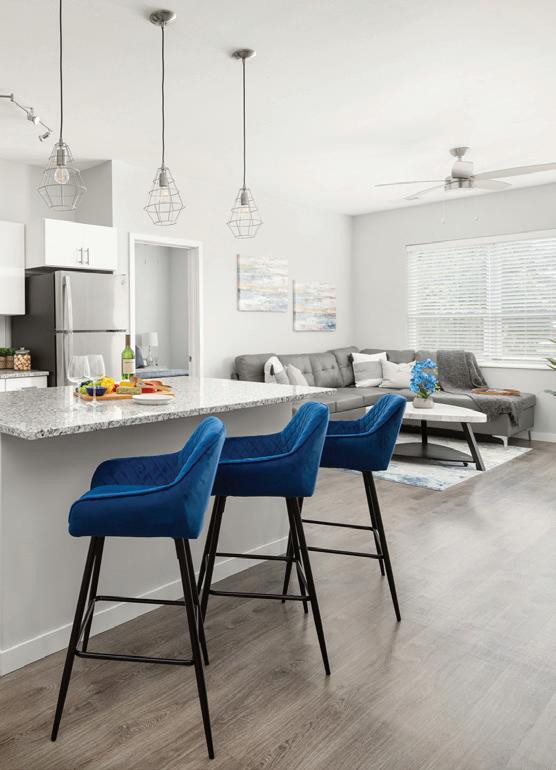
www.mcshaneconstruction.com
By Dan Rafter, Editor
When it brokered the sale of the Galleria Mall retail center in June of this year, Oxford Companies hit an impressive milestone: The deal’s sales price stood at $18.35 million. At $33.4 million an acre, this sale represents one of the richest land deals in Ann Arbor’s history.
Galleria Mall, located near the University of Michigan’s central campus, has since 1988 served as the home for several Ann Arbor businesses, including the beloved Pinball Pete’s Arcade. That arcade has found a new home not far from the Galleria location.
What led to this retail center fetching such a large price? Andy Sellinger, chief investment officer of Oxford Companies, said that the retail center’s site represents one of the last prime sites near the University of Michigan that can be used for new student housing.
Because of that, the land on which the Galleria Mall stood saw its value rise during the last several years.
“This property is on South University Avenue, basically the main street of Ann Arbor serving the University of Michigan,” Sellinger said. “It is the epicenter of where University of Michigan students congregate.”
An affiliate of Landmark Properties, one of the busiest student housing developers in the country, purchased the mall property. Landmark plans to demolish the Galleria and build a 17story development with apartment units and ground-floor retail.
This will be Landmark’s third high-rise residential building in Ann Arbor. Oxford Companies represented the seller of the retail center, Galleria Associates LLC.
Sellinger said that the demand for modern student housing near the Uni-
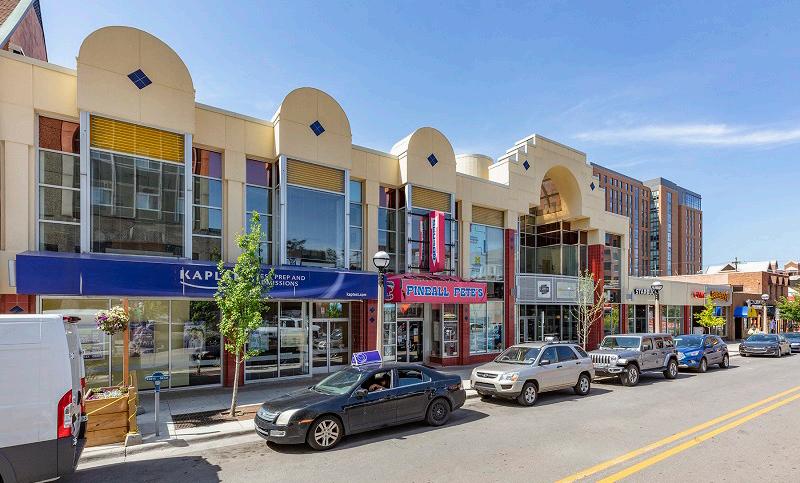
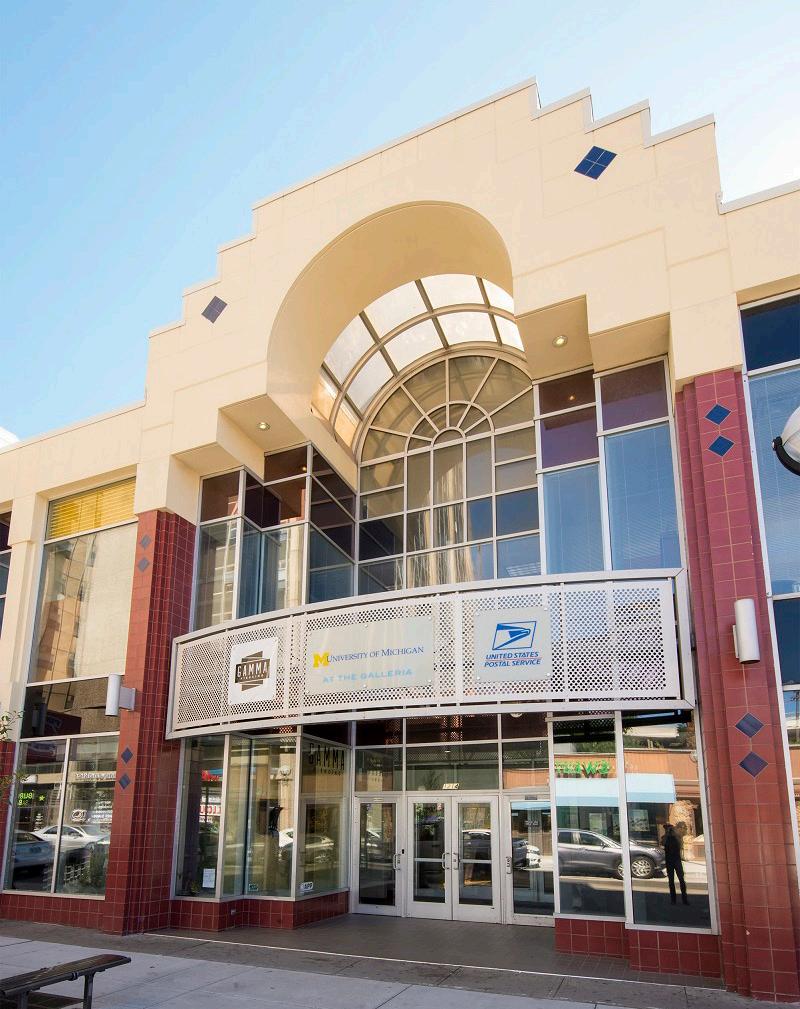
versity of Michigan has skyrocketed during the last 15 years. During this time, Ann Arbor has seen 14 high-rises rise near the university, all providing housing for students.
Even with this new supply, though, the demand for new multifamily properties here – such as the project that Landmark will soon begin developing – is still outpacing the number of units available.
That’s largely because the student enrollment at the University of Michigan continues to grow.
“I’d say that those 14 high-rises in the last 10 to 15 years are maybe helping Ann Arbor keep up with the growth of the University of Michigan’s student enrollment,” Sellinger said. “More likely, though, they have not. More likely, we still need more student housing to meet the demand.”
Sellinger said that the addition of more student housing also helps meet the overall demand for new multifamily housing in the Ann Arbor market. Yes, these new projects, including Landmark’s, are built for students. But as Sellinger says, any new housing is a positive when the Ann Arbor region, and the entire country, needs so many more housing units.
“We do need more affordable housing in Ann Arbor,” Sellinger said. “That is true. But we also need more of all housing types. Anytime that we can add to the housing stock here in any way, that is good for the city of Ann Arbor.”
And what of the Galleria? Sellinger said that the property has always been a strong retail performer, routinely attracting tenants. This is despite the property’s unusual architecture style and the fact that though the Galleria is old it is not historic.
As Sellinger says, no one will lament the disappearance of the property, especially once the modern high-rise apartment project being undertaken by Landmark Properties is complete.
“I think everyone will be happy with the new building,” Sellinger said. “We are not losing anything of historic value by demolishing the Galleria. The new multifamily building won’t be a luxury property. But it will be a strong example of quality, amenity-rich urban student housing.”




By Dan Rafter, Editor
J.D. Salazar has long understood the benefit of targeting a niche. It’s why the firm he founded, Willowbrook, Illinois-based Champion Realty Advisors, specializes in investing in and managing industrial service facilities.
These facilities, also known as outdoor storage facilities, are used mainly by transportation companies to store, maintain or dispatch vehicles, equipment and materials. Companies involved in the equipment rental and repair industries also occupy these facilities.
Investors have long overlooked this segment of the industrial real estate market. This isn’t surprising: Many investors are focused on warehouse and distribution space, a segment of the commercial real estate market that until recently was hot.
Industrial service facilities, though, offer another option for investors who are looking to diversify their commercial real estate holdings. And while

even this subsector of the industrial market is struggling today thanks to high interest rates, Salazar says that these facilities are still an attractive option for investors looking to branch out with their dollars.
We spoke with Salazar, chief executive officer of Champion Realty Advisors, about the benefits of investing in industrial service facilities, why he’s focused on this niche for so long and when he expects the industry to begin its rebound from the impact of high interest rates.
Why have industrial service facilities been such a niche side of the industrial market for so long?
J.D. Salazar: I’ve been in this specific
business for decades, long before industrial outdoor storage space and logistics-related real estate became the favored niche in the industrial sector. I was looking for something different and for something that I knew could provide solid returns and performance. Industrial service facilities fit that.
The amount of money targeted by institutional investors for industrial real estate in general has grown significantly since I entered this business. When I started in 1985, you didn’t have REITs. You didn’t have the BlackRocks and Brookfields of the world. The bigger investors weren’t putting money into industrial. The entrepreneurs and insurance companies were the ones buying and investing in industrial real estate. That changed rapidly in the
1990s. The REITs began raising money. Private REITS and massive private equity funds began pouring money into industrial real estate.
Even in the 1990s and most of the early 2000s, the industrial service facilities remained a niche that was pretty much under the radar. The institutional investors couldn’t buy $150 million of these facilities. Most of the transactions for industrial service facilities are in the $5 million to $10 million range. An institutional investor might want to buy a 1-million-square-foot building. To do the same thing with industrial service facilities, they’d have to buy 10 to 15 properties. The easiest path for institutional investors to allocate their resources continued to be by investing in the big industrial buildings.
Are more companies and investors getting interested in industrial service facilities?
Salazar: There were guys like me and a few others who recognized the value in aggregating industrial service facilities. You are seeing more of that today. A lot of companies that have secured capital from bigger institutions are aggregating the assets into a pool that will eventually contain half-a-billion dollars’ worth of assets. This approach has become more popular since 2016 and 2017.
Still, even with the increased attention they are now receiving, industrial service facilities are still relatively scarce. I’ve done the research. The share of industrial service facilities or outdoor storage facilities in the general industrial supply in, say, Chicago, is maybe 4% to 5%. That is pretty much the same across the board in other markets. It’s even less in markets like Miami and Seattle, where these facilities make up closer to 3% of the total industrial base.
Then there’s a market like Houston, which probably has the largest percentage of industrial service facilities in its industrial market. It’s still less than 10% of the overall industrial market, but it’s more in the 7% or 8% range. Why? Houston has always been an

out of business. They don’t have the resources to hang in there any longer.
One of the mantras of the transportation business had been to survive until ’25. Now we’re not sure if 2025 will be any better than 2024.
The other reason for the slowdown in investment sales has been because interest rates are so high. That will continue to be a problem until those rates finally start to fall.
The last major hurdle we face is that the spread between what sellers are asking and buyers are bidding for properties is still pretty significant. There is still a long way to go before the buyers and sellers get close enough to make
now. It is hard to make a deal that is comfortable for both parties. It’s not impossible. Some deals are still happening. But they are not happening at the same pace as they were in 2019, 2020 and even 2022. It started slowing in the middle of 2023.
How are you and your company getting through these slower times?
Salazar: You have to get leaner with your organization. It has to be as lean as it can get. You also have to be very careful with the opportunities that you chase. In the middle of last year, we switched from a rent-growth strategy to an occupancy maximization strategy. We haven’t raised our rental rates in most of our markets. We have actually cut our rates in some. We did this in Dallas-Fort Worth to increase our occupancy. That’s how you must do it. You maintain a lean operation and hope that you have some rent flexibility so that you can lower rents when you need to.
You mentioned that you also manage industrial service facilities in the Memphis market. How is that market performing today?
Salazar: It has been slow, too. It’s not because there is an oversupply of facilities in Memphis. It’s a strong transportation hub. What we are seeing there is
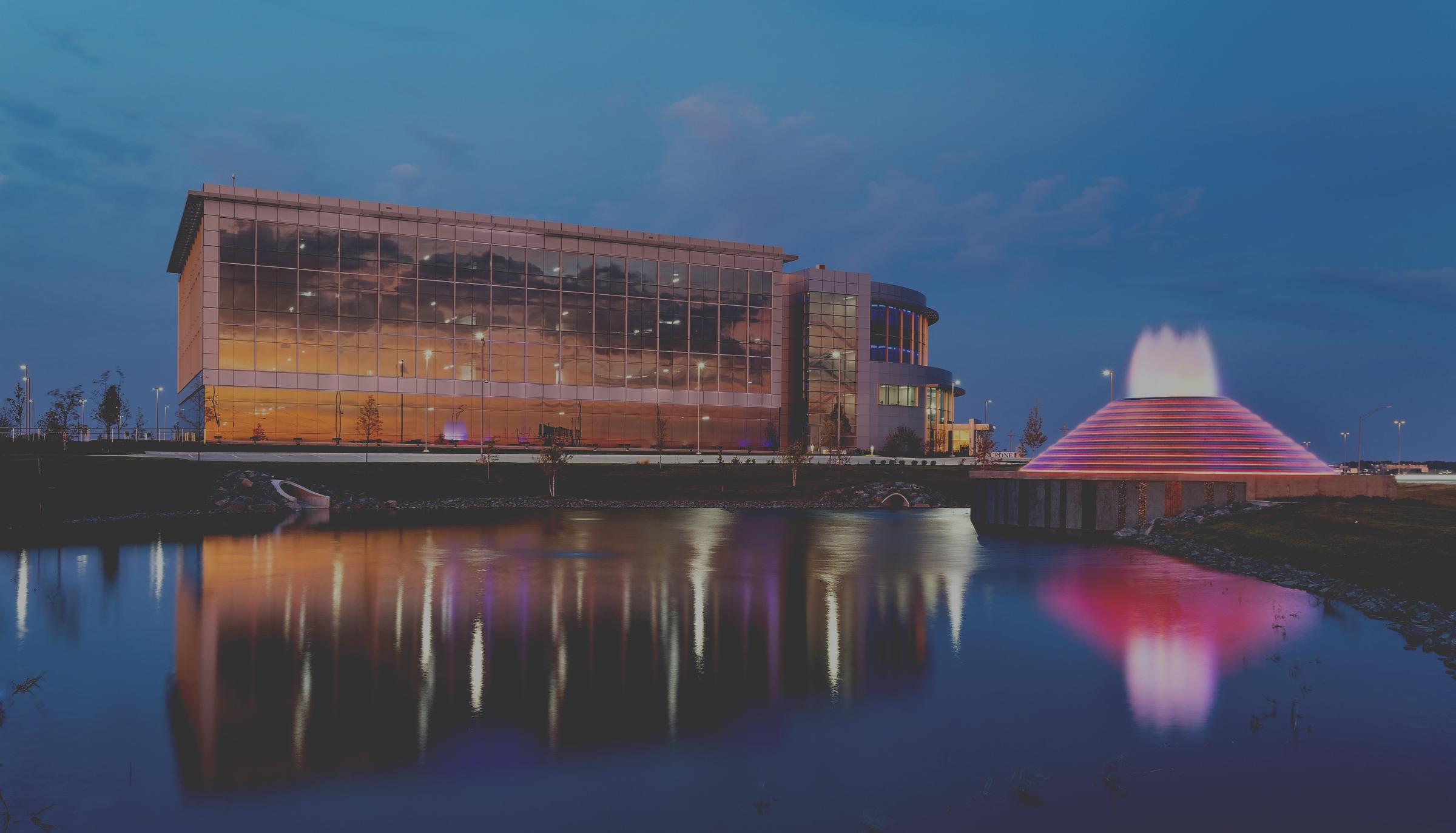
yard there earlier this year, in February. Leasing has been slow so far. We have had a lot of companies looking. But we have not yet landed a major tenant. We have some small tenants. But our yard is 38 acres. That is a big yard. We’re hoping to land some major tenants soon.
But long term, we believe that Memphis is a growth market. We feel the same way about South Florida. We have a 60-acre yard under construction south of Miami. That will be ready for occupancy in late December of this year. We are very confident that this property will do well. But it will probably take us 18 months to get that yard into the 90% occupancy range. We have high hopes for our new Memphis yard, too. We should have more than 50% of the land there leased by the fourth quarter.
Do you think more investors and companies will get into the industrial service facility niche, especially once real estate sales activity starts picking up again?
Salazar: I think this sector will stay active. You have enough institutional awareness now that I believe that industrial outdoor storage and service facilities will be part of every institution’s investment strategy. It might continue to be a small percentage of their portfolios, but it is not going away.




apartment building called The Duo.
most desirable of office properties, with Homa saying that the Class-A vacancy rate in the Omaha office market is in the 4% to 5% range.
“That is a function of people wanting to be in nicer, high-quality spaces,” Homa said. “Class-B office space is not doing as well. That’s not any big revelation. Those trends are consistent across the country. But overall, the Omaha office market is in really good shape, except for a few pockets around town.”
Other sectors are resilient, too. Homa said that the Omaha-area industrial sector has seen a slight increase in vacancy rates during the last two quarters. That’s primarily because so much new industrial product has been delivered to the market. But even with that slight increase, the Omaha-area industrial vacancy rate remains near 2.5%, Homa said.
“That vacancy rate is still quite low,” he said. “That slight uptick is nothing to be worried about.”
Owners and developers are getting creative in Omaha, too, to help preserve the market’s well-known resiliency. NuStyle Development has purchased the Central Park Plaza office property on S. 15th Street between Farnam and Douglas streets in downtown Omaha. NuStyle will convert the office towers into an
Homa said that this is the first major office-to-multifamily conversion in the Omaha market. It might not be the last: Developers across the country are converting outdated office space into other uses, often multifamily properties or hotels. The challenge? These old office buildings must be in the right locations, while converting office space into other uses can be so expensive that the adaptive re-use doesn’t make sense.
Still, the conversion trend could be one way to eliminate some of the harder-tolease older office space in the Omaha market.
Omaha boasts two major office developments now underway. Mutual of Omaha is building a 44-story office tower in downtown Omaha that will serve as the company’s headquarters. This project is expected to be finished in 2026.
Construction crews are also working on the headquarters campus for Applied Underwriters. This campus is located in the Heartwood Preserve mixed-use development that will cover 500 acres.
“The general sentiment about office in Omaha is cautiously good,” Homa said. “The people whom I visit with in the business community want their people back in the office. They are balancing that want with the hybrid work model. I’m not too familiar with many companies
that are just vacating their office space and having everyone work remotely. That trend has kind of come and gone.”
Homa said that even those companies that have embraced a hybrid work model still need office space.
“We are a resilient market,” Homa said. “We are conservative in our approach to development. We have a diverse economy here, too. Economically, we don’t seem to experience the big swings up or down largely because of the different types of business and industry we have. The business community leaders in Omaha see the value of having their employees in the office together. They understand that this is how you build a company culture. We are fortunate to have business leaders who think that way.”
Homa said that the construction of new industrial product has slowed this year. That’s largely because so much industrial space had been delivered since the start of the COVID-19 pandemic. Because of the influx of new industrial facilities, vacancy rates in this sector have ticked up slightly.
“The amount of leasing activity in the industrial sector has slowed,” Homa said. “But it has not come to a screeching halt.”
Homa said that the industrial vacancy
rate throughout the Omaha market was still at a low 2.5% as of the end of the first quarter. That’s lower than the national average.
“There is still demand for industrial space here,” Homa said. “There is not that much supply when it comes to smaller industrial spaces, spaces of 5,000 to 20,000 square feet. That part of the market is very tight.”
Omaha’s retail sector remains a strong performer, too, with many retailers new to the market now targeting the city and its suburbs.
Sam Rolfe, associate broker with The Lerner Company, said that demand from tenants for retail space remains high throughout the market.
“Vacancies in good retail spaces are few and far between,” Rolfe said. “It’s not easy to find good second-generation space in major shopping centers, grocery-anchored centers or centers in high-traffic, high-accessibility areas. Those spots go quickly.”
Rolfe pointed to the restaurant slice of the retail sector. Restaurant tenants are increasingly looking for second-generation space in Omaha but are often struggling to find it. This space is attractive because of how costly it can be for restaurant users to build a space from scratch.
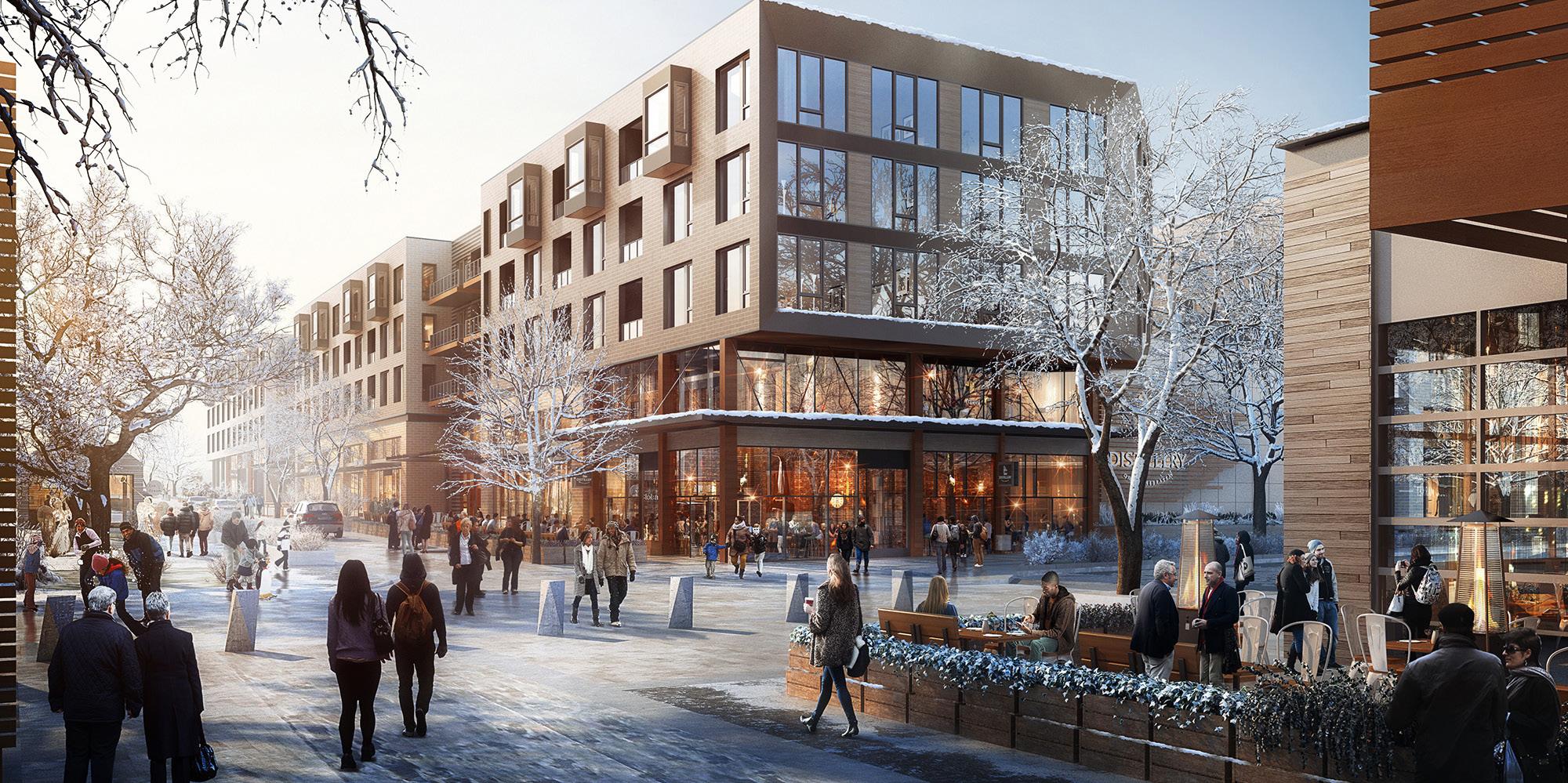
“You’ll read doomsday headlines about the real estate market today,” Rolfe said. “But we are quite a bit sheltered from that in Omaha. We are still a community where people want to get up and go shopping. They want to see people from the neighborhood and get out of their homes. You still get that small-town feel in Omaha even though we are a respectably large market.”
Rolfe said that he saw the strength of Omaha’s retail sector first-hand when he recently attended ICSC Las Vegas. At the vendor showcase, he continually encountered retailers who wanted to set up shop in Omaha.
That is a difference from years past in which many national retailers didn’t include Omaha in their expansion plans.
National retailers that once focused mostly on the coasts are now targeting Omaha and the Midwest, Rolfe said. They like the stability and resilience of cities such as Omaha.
This doesn’t mean that there isn’t some slowdown in the Omaha retail sector. Investment sales, thanks to higher interest rates, remain down in this sector, Rolfe said.
“For investment sales to start to happen in larger numbers again, people are going to have to come to terms with how the world is now and not how it was a year-and-a-half or two years ago,” Rolfe said. “It is a waiting
game now. People are waiting to see what the Fed does and how people react to that. But regardless of what the Fed does, there has to be a coming to terms with how things are. People have to adjust their strategies based on that.”
And what are customers looking for when it comes to new retail concepts in Omaha? Rolfe said that experiential
real estate remains popular. That includes concepts such as indoor miniature golf, pickleball courts, indoor golf simulators and high-end arcades and bowling alleys targeted toward adults.
Quick-service restaurant concepts are also popular, Rolfe said. He pointed to Buffalo Wild Wings, which is now offering a grab-and-go concept in Omaha.
“It seems that retailers in the food area are increasingly moving in one of two directions,” Rolfe said. “They are either pumping out food and having people come through and grab it or they are offering additional elements of entertainment and experience to keep them in the restaurant. The middle
page 20)
Since 1975, Investors Realty, Inc. has been helping clients buy, sell, lease, and manage commercial real estate in the Omaha Metro area. We’ve earned a reputation for providing straightforward advice, developing innovative solutions, and delivering results.




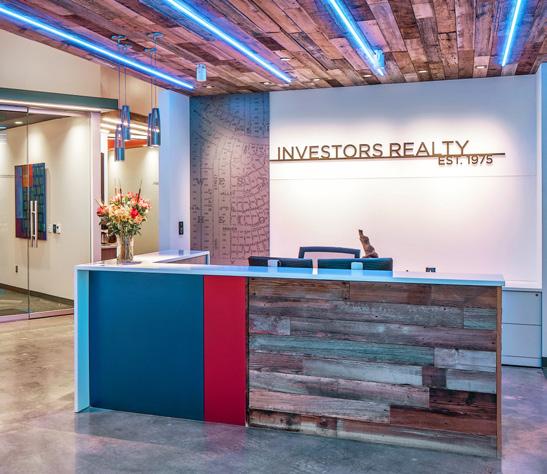

ground is losing steam.”
Rolfe said that he expects Omaha’s retail sector to remain strong in the coming years. He pointed to a new development planned along North 120th Street between Maple and Fort streets. Named Tranquility Commons, this project will bring new retailers, restaurants and hotels to this section of Omaha, though construction is not expected to begin on this phase of the development until sometime in 2027.
That winning conservative approach
Jon Blumenthal, partner with Omaha law firm Baird/Holm, said that Omaha is well-positioned to work through economic slowdowns. That’s largely because the development community here doesn’t overbuild, even when the commercial real estate sector is booming.
As Blumenthal says, developers here don’t “get ahead of their skis.”
“They don’t take on more than they
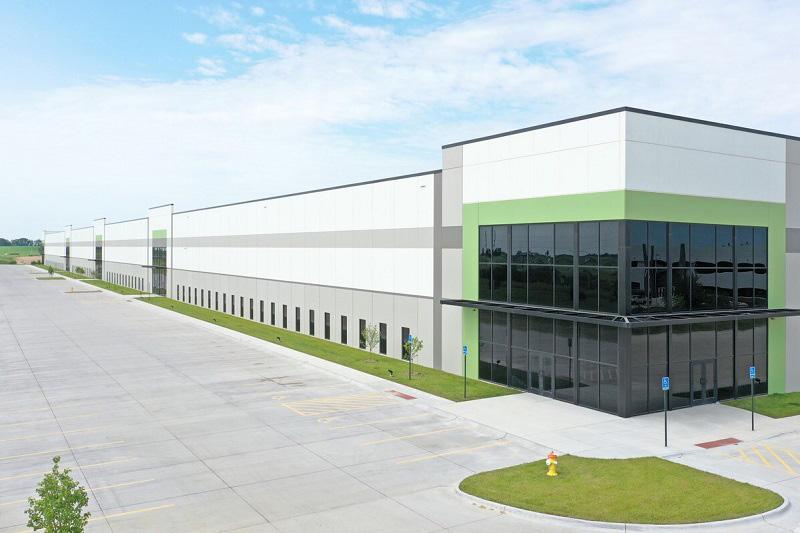
can or should,” he said. “It all starts there. You need the right players picking the right projects. You need people who know how to execute. Our developers know how to execute.”
Omaha is fortunate, too, because its downtown core remains strong. The city and developers have funneled money into downtown Omaha. Those dollars have led to an increase in traffic in the city’s urban core.
That in turn has helped the office sec-




















tor here. While it’s not booming, it is not struggling as much as it is in other major cities.
“We have not seen the exodus from the downtown office buildings that some bigger cities have experienced,” Blumenthal said. “It seems that people have gone back to work in our office buildings, at least in a hybrid mode. That’s a good thing.”
Blumenthal said that Mutual of Omaha’s plans to build their headquarters office tower in downtown has given yet another positive boost to the city’s urban core. It’s also a sign that companies have faith in downtown Omaha, a faith that might be lacking in other big-city markets.
Omaha’s planned streetcar project is another bright spot for downtown Omaha, Blumenthal said. This project, which will cost more than $400 million, is expected to be operational in the summer of 2027.
The city’s investment in the Gene Leahy Mall and is downtown riverfront parks has been a big boon to downtown Omaha, too, Blumenthal said. The renovated green space has drawn both visitors and tourists alike to the center of the city.
And Blumenthal says that the future looks bright for Omaha’s commercial real estate sector. That’s largely because the business community and government officials have a history of working well together.
“We have amazing public-private partnerships here,” he said. “Both the business community and our educational community invest in Omaha. The University of Nebraska, University of Nebraska Medical Cen-
ter and Creighton University are all active players. There is a lot of exciting expansion and growth coming from these educational partners.”
One example? The University of Nebraska Medical Center is developing the Innovation Hub at Catalyst near 48th Street and Saddle Creed Road in Omaha. The Catalyst building, part of the university’s larger Saddle Creek redevelopment project in Midtown Omaha, will bring the medical center’s UNeMed and UNeTech branches together to facilitate the growth of research and innovation. Space will also be leased to a variety of biotech and technology startups.
Work on the building is expected to wrap up in late 2024.
“We have a great philanthropic community,” Blumenthal said. “We have folks who are willing to contribute to make Omaha the place that we enjoy living in. We get good government support, too. We have government that understands the business and real estate communities and tries to support projects where it can and how it can. Can we use more tax-incentive programs? Sure. But government here is a wind at the back of developers, not a headwind.”
Like others, Blumenthal has noticed the slowdown in commercial real estate sales in Omaha. But also like others, he says that these commercial sales have slowed but have not come to a complete stop.
As Blumenthal says, investors are being more careful to choose the right projects in which to sink their dollars.
“I’m optimistic about the future of Omaha’s commercial real estate market,” Blumenthal said. “There are exciting developments happening all over the city.”
Jason Fisher, chief executive officer with Cushman & Wakefield/The Lund Company in Omaha, said that as in all markets, certain commercial sectors are performing better than others in Omaha.
He pointed to the retail sector. Outside of large, indoor shopping malls, the retail sector here is thriving, Fisher said, with a vacancy rate as low as he can remember.
“Years ago, the storyline was that we were witnessing the death of brickand-mortar retail,” Fisher said. “It has actually proven to be the opposite.”
Experiential retail has helped the sector, Fisher said, with companies that offer experiences such as Topgolf doing big business in the market. As Fisher said, you can’t provide an experience like bowling, knocking golf balls in the air or competing in pickleball online.
“Experiential retail is popping up all over Omaha,” Fisher said. “And that is a good thing for the retail sector.”
Fisher pointed, too, at the area’s industrial sector. The vacancy rate for this sector remains low, even though tenant demand for warehouse and manufacturing space has slowed slightly. The industrial market here has also delivered a significant amount of square footage in recent years, which is also slowing demand for new space.
As Fisher said, for the first time in a long time, the supply of industrial space in Omaha is outpacing the demand for it.
But even with that trend, the industrial vacancy rate is low. Fisher said in the first quarter of this year, Omaha’s industrial vacancy rate was still under 3%. For the last two-and-a-half years, this vacancy rate was at or below 4%, he said.
Fisher said that he expects industrial starts to continue to slow here until the demand from tenants rises again.
“It’s a natural slowdown while our development community waits for the absorption to catch up,” Fisher said. “In 2021 and 2022, demand was significantly outpacing supply. This feels like a natural correction. There are broader reasons for some of the slowdown in tenant demand, too. The distribution world is a little slower year-over-year. People are delaying and pausing some projects that were potentially in the works. It’s like everyone is taking a breath.”
The office market here is seeing more challenges, of course, as it is across the country, Fisher said. But the sector, as others say, is still showing resiliency despite these challenges.
Fisher said that he is seeing robust demand from tenants interested in
“We are fortunate to be in the Midwest. The slowdown in transactions isn’t as severe in the Midwest as it is in other parts of the country.”
renting out higher-quality space. The flight-to-quality movement that has seized the office sector is playing out in Omaha, too, Fisher said.
“When CEOs decided to bring back employees into the office whether on a hybrid system or full-time, there was an emphasis placed on making the office commute-worthy,” he said. “A lot of businesses made moves. During the last year, that flight-to-quality created a lower vacancy rate in our office sector. Our office market right now is being propped up by Class-A space the flight to quality.”
Vacancy rates in Omaha’s multifamily sector have ticked up slightly, Fisher said. Much of that is because of the significant amount of new supply that has been delivered in Omaha. Much of the new apartment products have been delivered on the fringes of the Omaha market, mainly in the west suburban areas. Fisher said that Omaha saw a record number of apartment deliveries in 2023.
This new product has increased vacancy rates slightly and slowed the growth of monthly apartment rents, Fisher said.
“It’s going to take a while to get all those new deliveries fully absorbed,” Fisher said. “There are also some new-construction projects on their heels. We expect there to be a little softness in absorption in the multifamily sector, especially in the suburban areas, for the foreseeable future here.”
Like others, Fisher is waiting, too, for
“It feels like once the convergence of seller expectations and significant capital needed to be placed happens, we might see transaction activity break loose,” Fisher said. “We are fortunate to be in the Midwest. The slowdown in transactions isn’t as severe in the Midwest as it is in other parts of the country. But we have definitely seen investment volume fall. Transaction activity is sluggish.”
Fisher did say that there is demand in the Omaha market for sale-leaseback transactions in the office sector. During the last 12 months, these transaction types have helped prop up Omaha’s investment-sales numbers, Fisher said.
investment sales to pick up in Omaha’s commercial real estate market. That hasn’t happened yet, even with the Fed stabilizing its benchmark interest rate.
Fisher said that there is a lot of capital siting on the sidelines today. Investors will deploy those dollars eventually, he said.
The Lund Company operates in six states. The company recently received 37 offers on a multifamily property in Texas. Fisher said that is a sign that there is capital ready to be placed once investors again understand what a normal market in today’s environment looks like.
“Properties that are on the market are getting a lot of eyes on them,” Fisher said.
As the
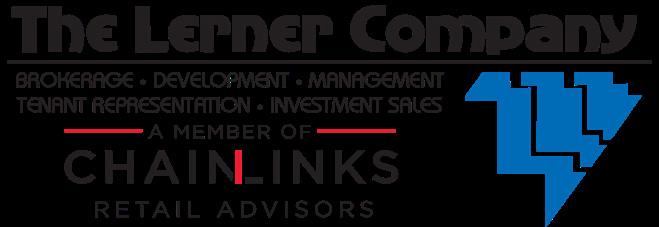
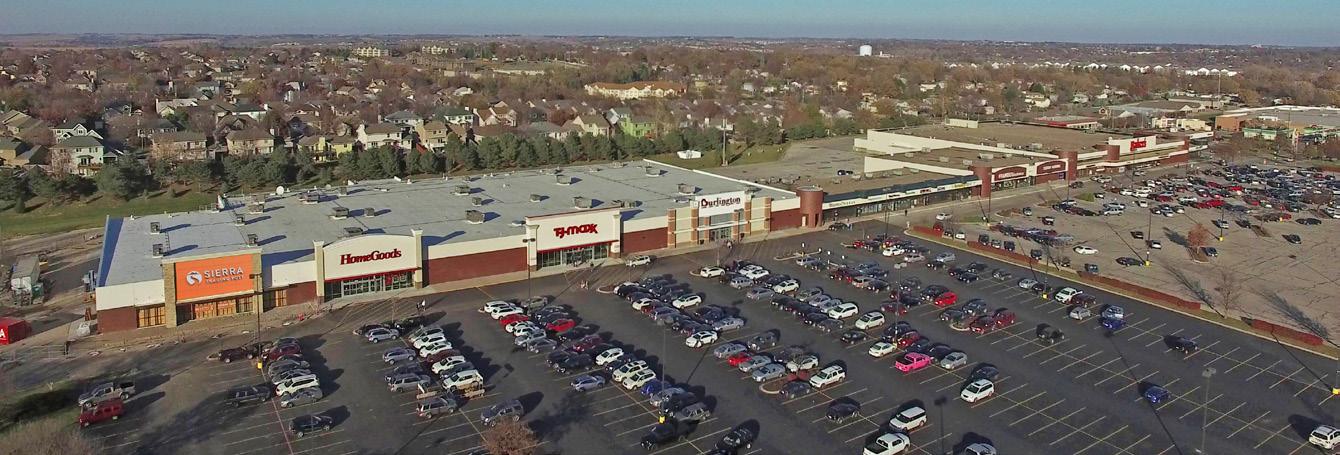
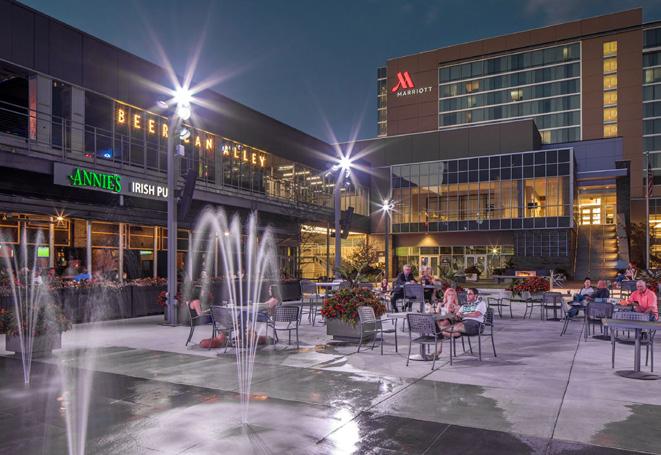
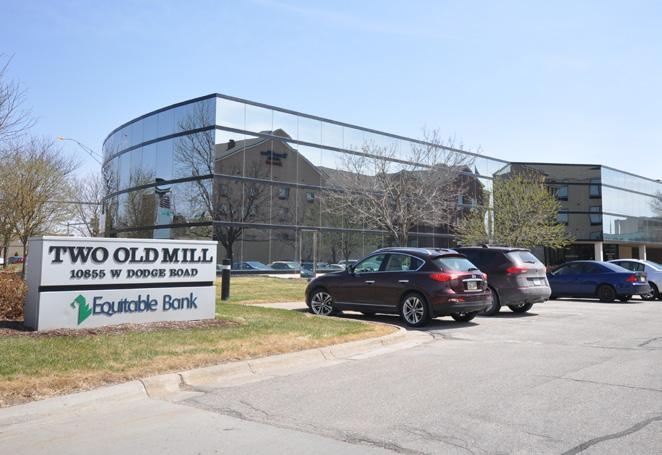
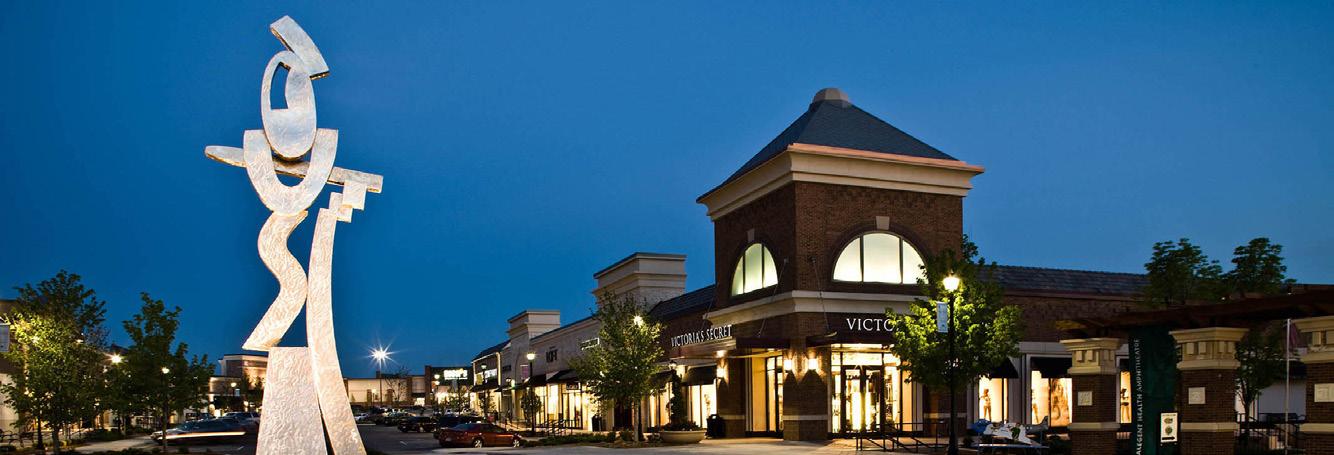
of living, entertainment and night-life options, ample green space and affordable housing.
So even as the Milwaukee commercial real estate market faces the same issues the industry faces in other major cities – high interest rates, a shortage of skilled labor and persistently costly construction materials – Wisconsin’s largest city continues to see major new developments, the addition of new-tothe-market retailers and a downtown resurgence that is still gaining momentum.
What’s behind the success of Milwaukee’s commercial real estate business? It all comes down to the city’s business-friendly environment, strong labor force, ideal location near Chicago and the investment dollars that have flowed into Milwaukee’s thriving downtown.
An adjustment period
As it did in most cities, the industrial market boomed in Milwaukee during the earlier years of the COVID-19 pandemic. Developers flocked to Southeast Wisconsin to build new distribution centers and warehouse space. The goal was to deliver products to consumers as quickly as possible.
And this new industrial space filled up quickly as companies gobbled up whatever square footage they could find.
Today? This has changed. New industrial starts have slowed in the Milwaukee region – as they have across the country – as vacancy rates in this sector slowly rise.
Tomás Clasen, an attorney with the real estate practice in the Milwaukee office of law firm Reinhart, said that Milwaukee’s industrial market isn’t struggling. Instead, it’s adjusting.
And it’s not just industrial. Demand patterns are changing for all Milwaukee’s commercial asset classes, Clasen said. The common denominator? Quality commercial spaces – whether in the industrial, retail or office sectors – are seeing more interest from tenants. Lower-quality, outdated spaces? They are seeing higher vacancy rates.
“There is still demand for higher-end product and the newer product coming into the market,” Clasen said. “But
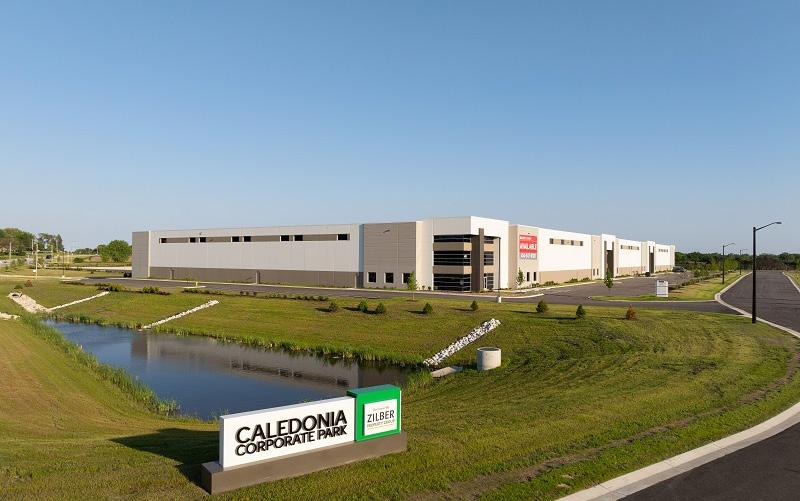
with respect to industrial, demand has cooled off somewhat. You could say the same thing across different types of asset classes. There is demand for higher-end commercial spaces, especially higher-end spaces located in or near downtown. At the same time, lower-quality product, in all asset classes, is seeing a higher vacancy rate.”
One asset class that is performing especially well in Milwaukee? Mixed-use developments, often in the form of buildings with retail on their first floors and apartment units above.
Clasen said that mixed-use developments are popular not just in Milwaukee but across the country. In Milwaukee, though, these developments are especially important today. The city’s mayor, Cavalier Johnson, has set a goal to push Milwaukee’s population to 1 million residents. One way to do this? Build denser housing. Mixed-use developments with several apartment units are an example.
“You need a combination of higher-density and lower-density housing,” Clasen said. “There is a desire to be creative in how to use the type of space we already have and in integrating complementary uses together. A mixed-use development is popular to both the people who live in such developments and the retailers who locate on these development’s first floors.”
Clasen predicts that as more residents seek housing in and around downtown Milwaukee, that more mixed-use developments will pop up.
But what about the one commercial sector that is struggling the most across the country, office? How is this sector performing in Milwaukee?
Not surprisingly, the Milwaukee office sector faces challenges. The continuing work-from-home movement means that companies don’t need as much office space. That has left higher vacancy rates in Milwaukee’s office sector, especially in older, outdated office buildings.
What is surprising here, though, is that Milwaukee’s downtown office market is performing well today. Yes, it, too, faces challenges. But Clasen said that many companies are moving into downtown office space today.
Clasen said that employers such as Pfizer are moving some of their central headquarters into the city and away from the suburbs. Kohl’s, too, is moving many employees into city offices, Clasen said.
The goal of these companies is to attract the best talent, Clasen said. Offering quality office space in the heart of downtown Milwaukee helps companies do this.
“There is a desire among companies to move some office jobs back to downtown to retain and attract talent,” Clasen said.
Clasen said that the office picture will become clearer as more employers determine their ideal return-to-work arrangements. For many companies,
this will be a hybrid working arrangement in which their employees work part of the time in the office and the rest of the time remotely. Other employers, especially those in the professional services industries such as legal and financial companies, might require their workers to return to the office on a nearly full-time basis.
“Not every industry is the same,” Clasen said. “Everyone is still trying to figure it out.”
Investment sales activity has slowed throughout Milwaukee, too. This isn’t unusual. As the Federal Reserve Board continued to boost its benchmark interest rate, investment sales of commercial assets dried up. The higher interest rates simply made these sales too expensive.
Now that the Fed has indicated that it will no longer increase its benchmark rate, observers are waiting to see if the financial body will cut this rate. If it does, that could provide a boost to today’s sluggish investment sales activity.
No one knows if a rate cut is coming. Clasen, though, says that that stability that came with the Fed’s decision to halt its rate increases will help increase investment sales activity.
“It being an election year, I would be surprised if rates went down before






the end of 2024,” Clasen said. “But I do think people across the real estate market are optimistic that rates have stabilized. I think they have a positive view that they will go down in the future. Folks are preparing to jump back into an active market when the rates do go down.”
What issues concern Clasen’s real estate clients? He said that any are trying to determine how to structure deals from a financial perspective to make transactions work. Developer clients are interested in TIF deals or in earning municipal grants to help make their projects happen.
“They are doing their best to take advantage of the opportunities that will help them get their deals off the ground,” Clasen said. “This is a challenging time that folks are working through.”
Clasen also takes on plenty of work earning entitlements for his clients, guiding these clients through the municipal, state and county approval processes,
He is also keeping a close eye on the new developments taking place across the Milwaukee market, of which there are many. These new developments, he said, provide him with plenty of optimism regarding the future of the Milwaukee CRE market.
“There is a lot of growth everywhere you look,” Clasen said. “There are so many projects coming online over the last six years. It’s almost difficult to keep track of them all.”
An industrial space that remains healthy
Todd Battle, director of industrial investments with Milwaukee’s Zilber Property Group, said that while it’s true that there has been some softening in the Southeast Wisconsin industrial market thanks to higher interest rates and construction costs, this sector remains healthy and robust.
“During COVID, we saw record year after record year,” Battle said. “We saw records in industrial sales, leasing and development. We are now a little bit off from those years. But those were record-setting years. Our industrial market is still a healthy and dynamic
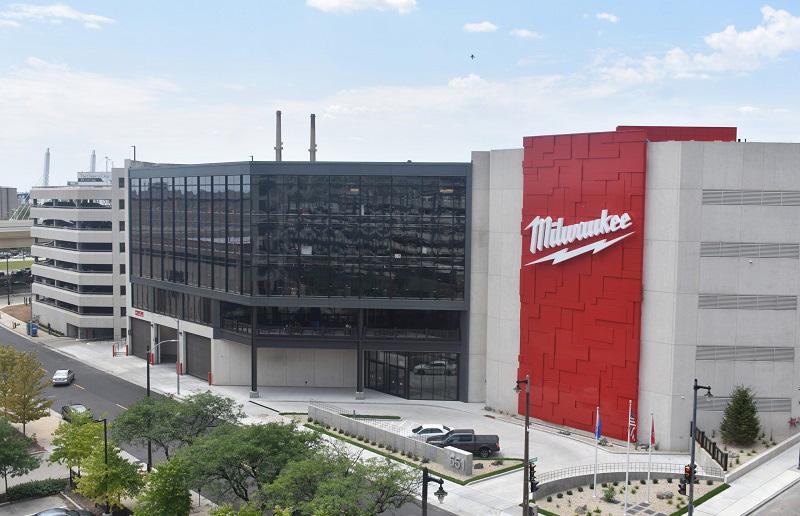
one today. It just feels a little different from those record-setting years.”
The Southeast Wisconsin market had seen a surge of new industrial space during the pandemic years. New construction has slowed throughout late 2023, though. Developers aren’t adding spec industrial space to the market today. This makes it a bit more challenging for end users to find industrial space in the Milwaukee region today, Battle said.
Supply is most constrained in the 200,000-square-foot to 250,000-square-foot end of the market, Battle said. Vacancy rates in these smaller facilities are in the low single digits, Battle said, because there simply isn’t enough space to meet demand.
“You can find those spaces,” Battle said. “We do build spec industrial. As they say, ‘Build it and they will come.’ We also do a fair amount of build-to-suit work where we have a tenant in hand and are building a specific industrial property to suit that tenant’s needs. You can do build-to-suits all day long in this market. There is a balance that needs to be struck. There has to be enough product in the market to meet tenant demand. When the amount of product starts getting constrained, the industrial development industry will respond. They will start to build more.”
Battle said that he expects this to happen shortly. End users seeking small to mid-size industrial properties are
struggling to find existing spaces to fit their needs. There just isn’t as much new supply of these smaller facilities coming online.
Battle said that during the next one to two years, developers will respond to this by building again.
“This always goes in cycles,” Battle said. “We were coming off a series of record years. It reached the point at which development and new construction got a little bit ahead of user demand. When that happens, construction slows, demand catches up with supply and then the market switches to one in which developers are encouraged to add more supply.”
Investment sales have slowed in the Milwaukee industrial market, too, thanks to higher interest rates. Battle, though, says that he expects sales activity in this sector to rise now that there is more certainty with rates.
Battle said that while falling interest rates would help unclog investment sales activity, certainty about how high rates can go is just as important.
“I think people feel that we have probably hit the ceiling on rates,” Battle said. “Once people get even more certainty with that feeling, you will start to see more transactions. Once people know that this is as high as rates are going to be, you’ll see more trades, more activity, more investment sales. If rates go down? That will only help because that
will enhance investors’ ability to make deals.”
What about amenities? What features are tenants looking for when searching for modern industrial space today?
Battle said that tenants still want industrial buildings that boast easy access to highways and roadway infrastructure. Tenants are also increasingly looking for buildings that are energy-efficient, well-maintained and modern. High clear heights are critical. Industrial spaces that also offer quality office areas are in demand, too.
There is more of a focus today on providing amenities that enhance the quality of life of employees, Battle said. For industrial, that could mean buildings that are located close to health clubs, daycare centers, restaurants, grocery stores and quality housing. It might mean outdoor areas and walking trails. Some industrial facilities offer higher-quality cafeteria areas or indoor gathering spaces for employees who are on breaks.
“Because there is such a tight labor force, companies want to be able to offer employees a nice place to work. It makes it easier to attract talent,” Battle said. “Is it easy to get to the facility? Are there amenities in and around the business park? Is there a healthcare center nearby or daycare? A lot of these factors influence tenants’ decisions on the industrial space they will lease out.”
As an office specialist, John Davis, of Milwaukee’s Founders 3 Real Estate Services, understands the struggles that the office sector is experiencing today.
But as a broker working in the Milwaukee market? He also knows that his local office market is performing better than many others across the country.
He knows, too, that Class-A office space loaded with amenities is outperforming other office types, both in Milwaukee and across the United States.
“The flight to quality is 100% still happening,” Davis said. “In our latest quarterly report, we reported that Class-B office properties are seeing vacancies at an all-time high rate. But the Class-A vacancy rate is much lower, at about 14%.”
Class-A office space has become so popular that there are no large blocks of this type of space available in the Milwaukee market today, Davis said. In normal times? Developers would add new Class-A space to the market.
These, though, are not normal times. Though the demand for new Class-A space is high, developers, still wary of high interest rates and the continuing appeal of the work-from-home move ment, are hesitant to add new office space to the market.
“There are tenants who want to get out of their Class-B office space,” Davis said. “But they don’t have options for Class-A space. New Class-A office space will be coming down the pike eventually. We need construction prices to get a little lower before that happens. Unfortu nately, no one is sure when that will happen.”
When tenants do lease new office space, they are often leasing less space at a higher cost-per-square-foot. Davis, though, said that companies are not going too small with their new office space.
That’s because most companies and employees do not enjoy the concept of hoteling, where employees sign up for desk space on the days on which they come into the office. Most would prefer that employees have their own assigned desks.
“Employers are looking to hire the best talent, and that best talent is often located downtown.”
Davis has seen this firsthand. Founders 3 moved to a new office space last year and polled its employees. Only one person was OK with hoteling, Davis said.
This tells Davis that while, yes, many companies will lease a smaller footprint, they still need enough office space to keep their employees happy. This is especially true considering that employers increasingly want their workers
outmoded office space into other uses, such as multifamily properties or hotels. Davis said that this is happening in Milwaukee with a limited number of office properties. But a conversion requires the right property and the right site. Finding that combination can be difficult.
Because of this, it’s not correct to say that conversions will save the struggling office sector.
properties will work in this market. But conversions are not quite as common as some seem to think.”
Rebecca Gries, vice president of corporate attraction and expansion for Milwaukee 7, is optimistic that Milwaukee and Southeast Wisconsin will remain a draw for companies looking for pro-business governments, lower taxes, a high quality of life and a lower cost of living.
Milwaukee 7 is an economic development corporation serving the seven counties of southeastern Wisconsin: Kenosha, Milwaukee, Ozaukee, Racine, Walworth, Waukesha and Washington. Gries said that businesses are interested in each of these counties.
“We have seen so much growth in the Milwaukee area during the last decade, especially in the Interstate-94 corridor between Milwaukee and the Illinois

talent, and that best talent is often located downtown,” Davis said. “That is a big factor in why the downtown Milwaukee office market is so resilient today.”
There has been plenty of talk of turning
When business professionals need real estate solutions to meet their business challenges, the team at Cushman & Wakefield | CRESCO Real Estate is their first call.
Why? Because at CRESCO, we focus on what really matters: our clients.
lower cost of doing business here. And we offer that proximity to Chicago. It’s a strong combination for corporations looking to expand.”
A good example? HARIBO of America Manufacturing. The maker of gummy bears opened a 500,000-square-foot manufacturing facility in Pleasant Prairie, Wisconsin. Eli Lilly earlier this year purchased a manufacturing facility in the same business park from Nexus. Lily estimates that production at this facility could begin by the end of 2025.
WestRock Company announced at the beginning of this year that it will build a corrugated-box manufacturing plant also in Pleasant Prairie. Construction of this facility is expected to cost $140 million.
In perhaps the biggest news of all? Microsoft announced that it will build the country’s first manufacturing-focused AI co-innovation lab in Mount Pleasant, Wisconsin.

Microsoft announced, too, that it will invest $3.3 billion between now and the end of 2025 to expand its cloud and AI infrastructure capacity with the development of a data center campus in Mount Pleasant.
This project is expected to bring 2,300 union construction jobs and provide long-term employment opportunities. Microsoft is also partnering with Gateway Technical College to build a Data


Center Academy to train and certify more than 1,000 students to work in the new data center and in IT-sector jobs in the area.
“These are exciting times for Southeast Wisconsin,” Gries said. “We have quite a few companies that are looking to invest across the entire region. It’s not just that I-94 corridor. Companies are looking at Waukesha and Walorth counties. As soon as an industrial building goes on the market in Waukesha, it’s sold.”
Southeast Wisconsin has also attracted the attention of foreign companies, Gries said. That has continued to provide a boost to the industrial sector as these overseas companies look for manufacturing and warehouse spaces of varying sizes.
Not all commercial sectors are created equally, though. As Gries says, the office sector continues to face challenges. The good news? This sector, even with these challenges, continues to be resilient in Southeast Wisconsin, especially in downtown Milwaukee.
A good example? Milwaukee Tool has moved into new office space at 551 N. 5th St. in downtown Milwaukee, the former Assurant building. Earlier this year, financial services company Fiserv moved its global headquarters from Brookfield, Wisconsin, to downtown Milwaukee. The 170,000-square-foot building sits on the corner of Vel R. Phillips Avenue and Michigan Street.
And Northwestern Mutual is investing $500 million into its downtown campus to modernize the facility.
“There was more activity in the office sector pre-COVID, that is true,” Gries said. “But we have seen some of that

activity come back. It’s not necessarily back to pre-COVID times, but it has picked up.”
Gries points to a study released by the University of Toronto in 2023. That study shows that downtown Milwaukee’s recovery in foot traffic since the beginning of the COVID-19 pandemic ranks second in the nation, behind only Columbus, Ohio.
“Our downtown has been recovering quickly from COVID,” Gries said. “We have seen a lot of activity downtown. Companies are investing in office space in downtown Milwaukee. We have amenities like The Avenue with its food hall. That is always busy. The rejuvenation of our downtown has been exciting to see. There is so much going on.”
The future? Gries expects it to be a bright one. As she says, not only does the Southeast Wisconsin region boast low taxes and governments willing to work with businesses, it also features a deep and talented labor pool. Area schools work hard to make sure that there is plenty of well-trained talent ready to step into quality jobs throughout the region.
And one more benefit of doing business in Southeast Wisconsin? There aren’t many natural disasters here. Gries says that this always gets a laugh from companies considering a move to the area. But when Gries shows businesses a map listing recent natural disasters? It’s clear that very few of them happen in Wisconsin.
So, yes, that’s one more reason why the future looks so bright for Southeast Wisconsin’s business -retention and -attraction efforts.
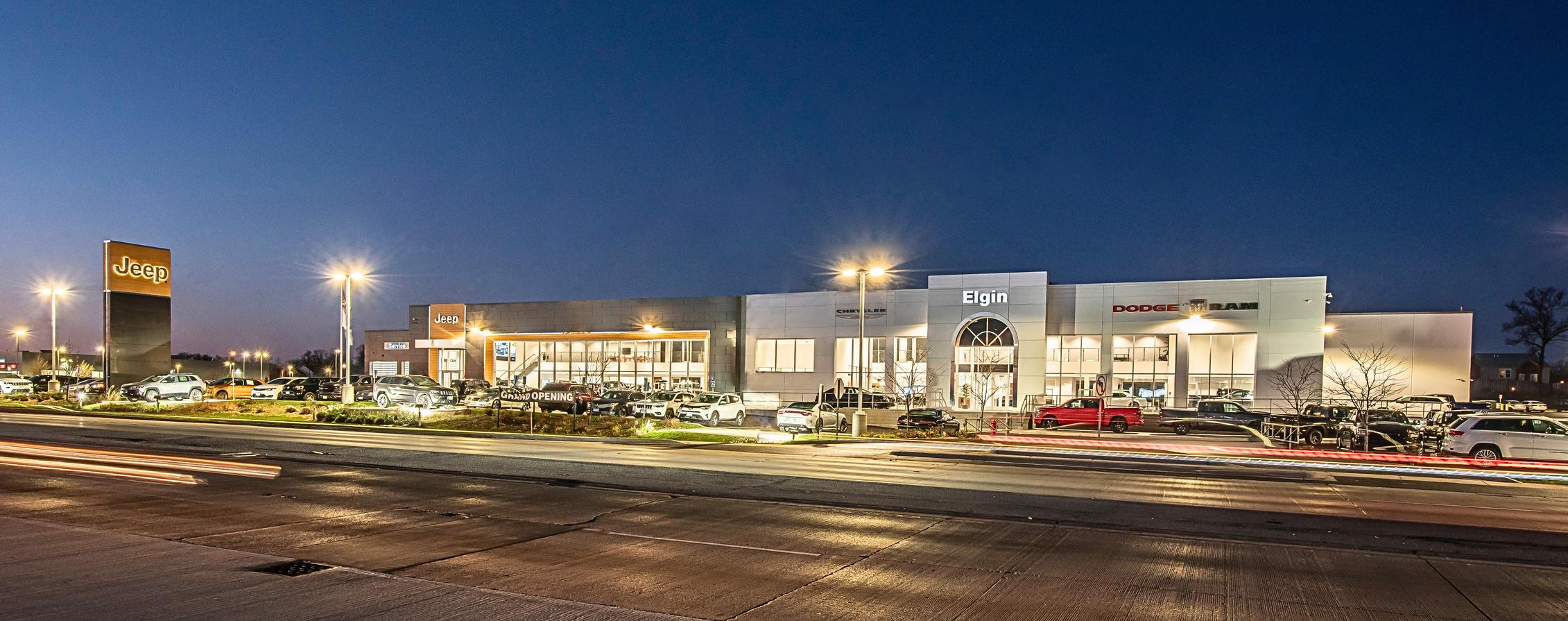




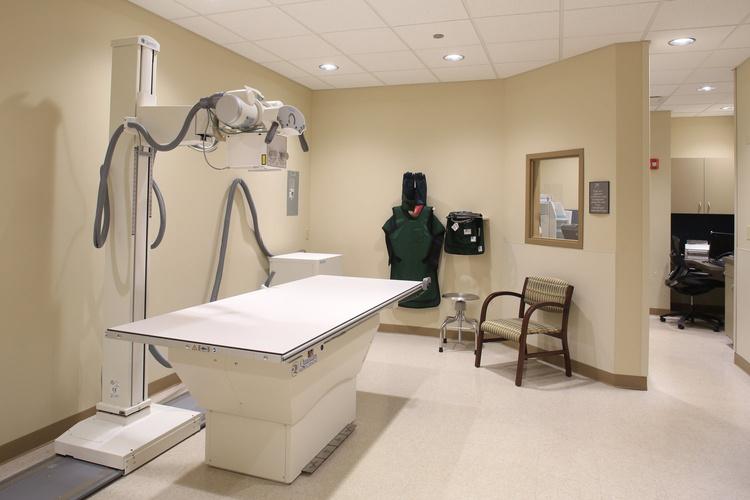
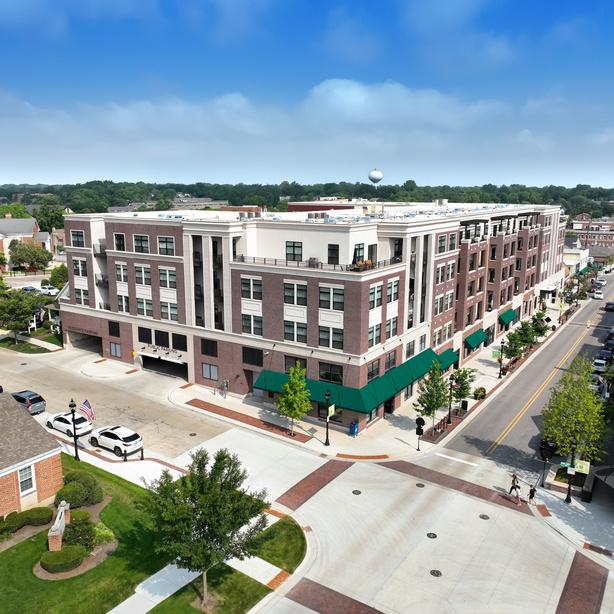

By Dan Rafter, Editor

Remember those dire headlines warning of a retail apocalypse? Or those news stories predicting the death of brick-and-mortar stores? Turns out, retail wasn’t nearing its end. It was just evolving.
And the results of that evolution are clear today in the Twin Cities: The retail sector is strong here, with an eclectic mix of restaurants drawing diners hungry for new experiences to Minneapolis-St. Paul and other retailers offering experiences that customers can’t get online.
How has this happened? Why is the retail sector performing so well in the Twin Cities today? Retail specialists here say it all comes down to creativity and offering customers something new.
Mall of America in Bloomington, Minnesota, has been generating headlines since it opened in 1992. This massive mall boasts more than 520 stores and employs about 11,000 year-round workers. About 40 million people visit the mall each year. That’s more than the combined populations of North Dakota, South Dakota, Iowa and Canada.
And in good news for the state? Mall of America generates nearly $2 billion in economic activity each year for the state of Minnesota.
The fortunes of the mall, then, are a good indicator of how strong the retail sector in general is in the Twin Cities region.
It’s good news, then, that Mall of America is as busy as ever, according to Carrie Charleston, vice president of leasing at the mega-mall.
“Our leasing activity has been incredibly strong over the last four years,” Charleston said. “We are seeing a lot of
new brands entering our market. There is so much leasing activity, that we are looking at relocating tenants to make room for the new ones coming in.”
Charleston says that new tenants help drive even more traffic to the mall. That’s largely because Mall of America features more than 170 brands that were new to the Minneapolis-St. Paul market when they first opened in the mall.
“That is what sets us apart. We have so many unique brands,” Charleston said. “The only place to shop at some



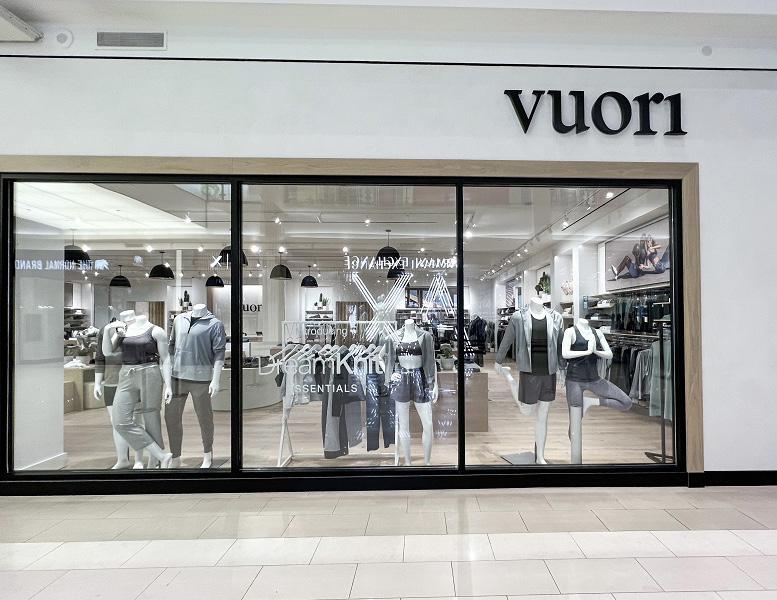

of these brands on a brick-and-mortar basis is in Mall of America.”
Why do these new-to-market brands choose Mall of America? Charleston points to the tens of millions of visitors who flock to the mall each year. Retailers want to get their brands in front of all these eyeballs.
Charleston said that many of the brands in Mall of America report that their mall locations rank as the top-selling spots in their chains.
Have a spot in Mall of America allows retailers to show off their wares to shoppers from across the globe, too. Charleston said that 60% of Mall of America’s traffic comes from local shoppers, while 40% comes from tourists, who travel to Bloomington from around the world.
Charleston said that a wide range of retail types are thriving today at the mall. This includes retailers who cater to children, those who offer beauty supplies, those specializing in athleisure and sporting goods and those offering jewelry.
Mall of America is known for its experiences, too. The mall holds an indoor amusement park, large aquarium, multiple miniature golf courses, arcades, ax-throwing, movie theater and a multi-story M&Ms store, among other examples of experiential real estate. These retailers are important: Consumers today are seeking experiences.
“We are high on restaurants today. We are receiving a lot of inquiries from different users. It’s the post-COVID effect: People want to get out.”
Those retailers who offer them are positioned to thrive today.
“We have always been about experiences,” Charleston said. “We are seeing a continued increase in retailers who are bringing experiences into the mall. Our guests and customers are always looking for something new to do. Those experiences create brand loyalty.”
Charleston said that about 65% of the tenants in Mall of America are classified as retail while 35% would be better classified as entertainment and dining.
An experience doesn’t always mean a trip to an amusement park or aquarium. Many of the retailers inside Mall of America offer in-store demonstrations of their products. Others have salespeople who educate customers on all that they can do with their products.
Consumers might not buy the product while they’re at the brick-and-mortar location. But when they get home, they might order it online. The retailer still made a sale, thanks in part to the expe-
rience it offered. This is what is known as the omnichannel approach, retailers focusing both on brick-and-mortar locations to showcase their products and online stores at which consumers make their actual purchase.
“We went through the pandemic when people weren’t able to shop as much in person,” Charleston said. “People were excited to get back and go to a store to see, feel and touch products. That’s more satisfying than just shopping online. It goes back to the experience that is being provided inside the store. It creates brand loyalty.”
Charleston said that Mall of America continues to evolve, much like the retail sector. She said that seven new brands recently opened in the mall as Mall of America continues to offer new retail experiences to its visitors.
“Bringing in new retailers is what we love to do,” Charleston said. “And we do it well. We have such a great offering. There is something for everyone. There is always something new in terms
of stores, dining and attractions. We are boosting the percentage of our offerings that are more on the side of experiences and attractions. Our guests want it and desire it. They love the experience.”
Of course, Mall of America isn’t the only example of a retail space that is thriving today in the Twin Cities market. In both the urban heart of Minneapolis-St. Paul and in its suburban communities, retail spaces are filling fast today, say the brokers working this market.
Ben Kepple, director of commercial operations with Minneapolis-based Sherman Associates, said that the demand from tenants for retail space throughout the Twin Cities market remains high. This is especially true of restaurant space, Kepple said.
“We are high on restaurants today,” Kepple said. “We are receiving a lot of inquiries from different users. It’s the post-COVID effect: People want to get out.”
Kepple points to the new restaurant leases that Sherman Associates has signed as proof of the demand for restaurant space here.
Sherman Associates recently closed a lease for casual French restaurant Chloe by Vincent in the Canopy by Hilton hotel in Minneapolis’ Mill District. Sherman also closed a lease for La Madre, a Mexican restaurant at 2025 Park Avenue, also in the Mill District.
Then there’s Pearl & the Thief, the restaurant of famed chef Justin Sutherland. This spot, specializing in seafood and southern cuisine is opening at Sherman Associates’ O2 Luxury Tower at 250 Portland Ave. in Minneapolis.
“We’ve found that certain areas of Minneapolis, including the Mill District, are hungry for restaurants,” Keppler said. “The demand is there, and deals will be done.”
Why are so many new restaurants moving into the Twin Cities market? Keppler again cites the impact of COVID. People today want to spend time outside their homes. Sitting






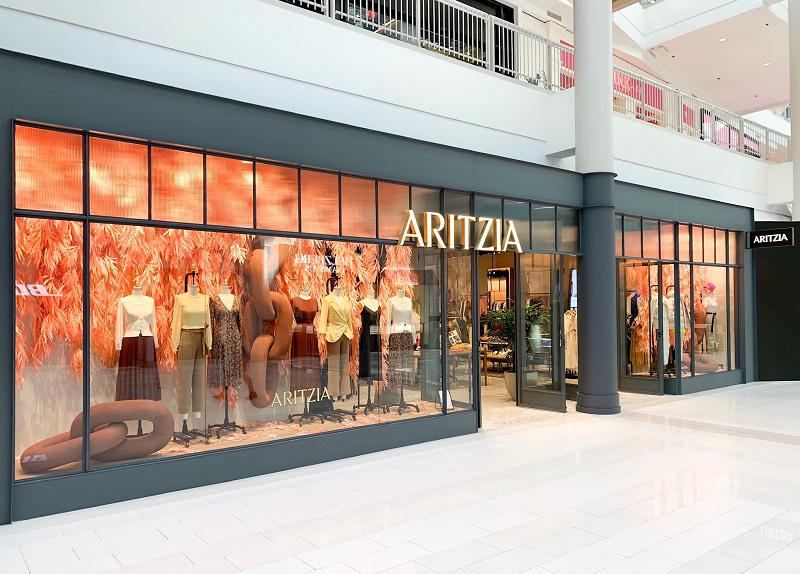
down for a nice meal or enjoying an experience? That satisfies this desire.
The Mill District is particularly appealing to restaurateurs, Keppler said. The average income is high in this slice of the Twin Cities market. Several older residents live here, too, and they are more likely to spend their dollars on a meal out. The Mill District also has fewer safety issues than does the heart of downtown Minneapolis.
























It helps, too, that a growing number of companies have brought their employees back to the office at least on a hybrid basis, Keppler said. When employees are back at the office three or four days a week, that provides a boon to restaurants and other retailers.
Keppler said that Sherman Associates has about seven residential buildings and 1,200 total units in the Mill District area. When new residents move into these spaces, Sherman Associates


often provides them with a $100 gift card to a restaurant in the building or near it. That’s another help to restaurants in the area.
“That can be a big thing for the restaurants,” Keppler said. “It’s free marketing for them. It also helps us at Sherman Associates get deals done. Our clients know that we’ll do whatever we can to take care of them. We know that the restaurant industry is a tough one. Anything we can do to help them? We’ll do it.”
Keppler agrees with Charleston that experiential retail is a draw in the Twin Cities market, too. An example? The Puttery on Hennepin Avenue is an immersive miniature golf course and bar. This concept is attracting a steady stream of customers.
“It all goes back to people wanting to be around people,” Keppler said. “We are seeing less of the retail that is just retail and more of the retailers that are offering experiences. People want those experiences today when they go out. And they want to have them with other people.”











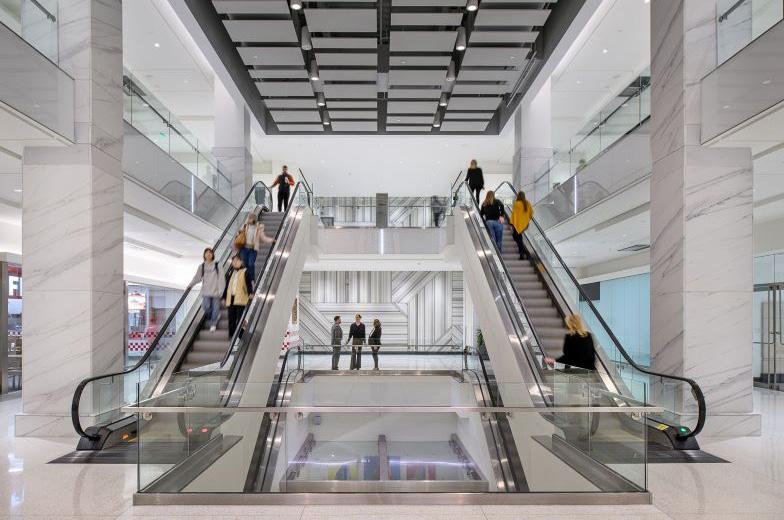

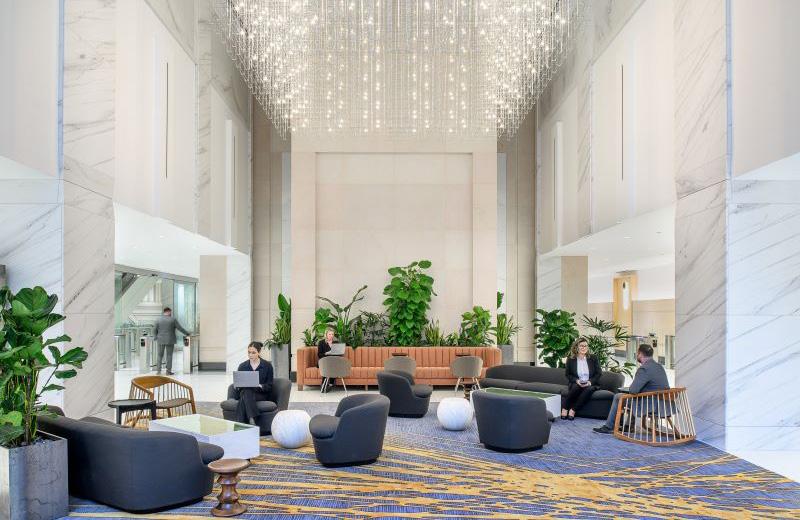
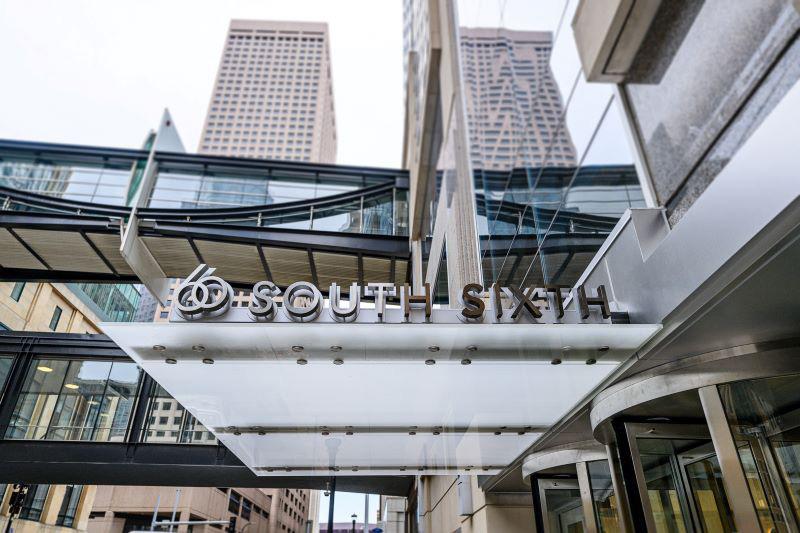
By Dan Rafter, Editor
The office sector in Minneapolis-St. Paul isn’t unusual today: It faces challenges.
With so many employees still working from home, companies are reducing the amount of office space they need. That is leaving high vacancy rates throughout the Minneapolis-St. Paul office market.
And are things getting better? That depends largely on the type of office property. Many companies are moving to higher-quality Class-A buildings to entice their employees to return to the office at least on a hybrid basis. But Class-B and -C buildings? They continue to struggle to attract tenants.
We spoke with Ryan Pires, vice president for asset management at KBS, about the challenges that the office
sector faces in Minneapolis. Here is some of what he had to say.
Can you give us some insight into the current Minneapolis-St. Paul office market and your outlook for the remainder of 2024 and beyond?
Ryan Pires: Post-pandemic leasing continues to be a struggle in downtown Minneapolis and across the metro. While companies are reevaluating their space requirements, most are prioritizing flexibility, and, more importantly, amenities that help draw employees into the office.
Even though the return to office has been slow, we are increasingly seeing the importance and need for premium office space. With only one office property under construction, revital-
izing older office space is a key part of bringing employees back into the office. There’s a flight to quality among tenants and this will continue to be important in Minneapolis.
According to JLL, the majority of the 2.5 million square feet of current office tenant requirements are for less than 25,000 square feet of space. Leasing activity for smaller deals is likely to remain strong in 2024, and spec suites will remain attractive. We believe in the strength of converting vacant space, whenever possible, into spec suites because they offer the flexibility companies are looking for. Spec suites tend to lease faster, and tenants tend to pay more for this space. They perform well because they offer tenants a move-in ready space that meets their needs and saves them time.
Downtown Minneapolis has lost some of its biggest companies due to lingering safety concerns. KBS’ 60 South Sixth is in the heart of downtown so securing the safety of tenants has never been more important. We’re consistently looking at the latest trends in safety technology and working with the Minneapolis Police Department to offer tenant safety classes. Consumers and businesses want a reason to come and stay so we’re doing our part to encourage retail and business to return to the city safely.
What are businesses considering when moving to or expanding their office space within Minneapolis? Which amenities and building features are influencing decisions?
Companies are encouraging employees

to return-to-office by providing better experiences in-office versus being remote. They’re seeking Class-A buildings with great amenities.
We believe that the investments we make to improve tenant satisfaction will pay off with higher retention and lower vacancies. For example, a few years ago, we repositioned and rebranded 60 South Sixth with a multimillion-dollar renovation that includes a hospitality-inspired tenant lounge and a high-end art-inspired lobby renovation. We updated the gym by adding state-of-the-art fitness equipment and turned 38,518 square feet of vacant space into well-designed and furnished spec suites. The newly renovated space is unique for the area. When Fredrikson & Byron moved in last year they commented on how well the high-end finishes in the lobby and even from the parking garage naturally flow into their own newly designed space.
In addition, tenants are looking for more collaborative open spaces as well as privacy, seeking huddle rooms and phone booths. They’re trying to create a sense of community through shared social spaces and task-focused work environments. Fredrikson’s new office space is a good example of this trend. They incorporated a variety of welcoming meeting spaces that encourage camaraderie but also offer offices when employees need a quiet place to work.
Which submarkets are seeing the most leasing activity? How does the demand for office space downtown compare to the suburbs?
While leasing in the suburbs has not yet reached pre-pandemic levels, the activity is considerably higher than downtown. Bloomington continues to be an attractive submarket. It is well
“With only one office property under construction, revitalizing older office space is a key part of bringing employees back into the office.”
located with an abundance of shopping, dining, hotel and entertainment options.
KBS’ Northland Center is an example of how the company supports leasing and retention by making capital improvements to its properties each year. We recently completed nearly $1 million in renovations at Northland Center, further enhancing its appeal to companies seeking top-tier space in the Bloomington area. These renovations included refreshing the lobbies of both buildings and the addition of 25,000 square feet of spec suite space.
As someone who understands the market, we know how much Minnesotans want to be outside whenever the weather is nice, so taking advantage of outside space is paramount. With this in mind, at Northland Center we made use of all the functional exterior space it has. We added outdoor seating areas with comfortable chairs and tables, giving employees both interior and exterior areas to work or relax. We try to tailor amenities to each property and one of the most popular amenities, the new pickleball court, is one of the most cost-effective features we added.
We strive to create a welcoming, hospitality-inspired environment at each property that will positively impact occupancy, and the renovation helped us do that. In fact, we signed over 145,000 square feet in new and renewal leases at the 492,514-square-foot office park last year.
What are some of the unique opportunities and challenges impacting the Minneapolis office market?
Downtown Minneapolis was uniquely impacted by social unrest during the pandemic, which has kept some consumers and businesses away. We hope
that by creating a safe and welcoming environment people will want to return the city back into the vibrant place it used to be. Spring is one of the best times of the year and we’re encouraged by the amount of people we’re seeing in the city and returning to the office. According to The Minneapolis Downtown Council, 65% of workers from the top15 employers have some weekly office presence in 2023 and we see this trend improving in 2024.
As tenants continue to seek new and
recently renovated properties, vacancy will likely climb higher in older, outdated buildings, so it’s good to see that Minnesota ranks high for office conversions. About three out of every five future apartment units are former office units. This is positive for the overall community, as well as the owners of higher-quality or upgraded Class-A assets as it should take older office buildings out of the market. A further contraction of supply should be beneficial in the long term as tenants seek out smaller but nicer office space.

By Dan Rafter, Editor
In good news for the commercial real estate market, 80% of U.S.based CRE professionals said in a recent survey that they expect to buy or sell property within the next six months.
That would be a boon to the commercial real estate industry, which is still waiting for owners and investors to begin buying and selling industrial facilities, office buildings and retail centers in higher numbers once again.
The positive news came from Altus Group’s second quarter 2024 CRE Industry Conditions & Sentiment Survey released on June 12. The quarterly survey contains feedback from 560 commercial real estate professionals representing more than 97 firms in the United States and Canada. Altus Group surveyed these professionals from March 25 to April 29.
One of the bigger takeaways from this report is the willingness among respondents to make real estate deals. Commercial real estate sales have been slow since the Federal Reserve Board first began tweaking its benchmark interest rate. Now that the Fed has said it will no longer increase this rate, the hope is that investors and owners will begin selling and buying commercial real estate in larger numbers.
With 80% of U.S. survey respondents saying that they do plan to buy or sell in the next six months, it does look like the Fed’s decision to no longer increase its benchmark rate will spur more sales activity in the commercial real estate sector.
The survey found, too, that 91% of the largest firms said that they intend to transact during the next six months. That is up from 83% in the first quarter of 2024.
And what asset classes will investors buy? Four the fourth consecutive

“91% of the largest firms said that they intend to transact during the next six months.”
quarter, respondents told Altus Group that industrial and multifamily properties are expected to be the best performers during the next 12 months. U.S. respondents also said that retail is expected to be attractive, too.
Not surprisingly, respondents cited office as the expected worst performer during the next 12 months.
This willingness to make deals doesn’t mean that U.S. commercial real estate professionals aren’t worried about the country’s economy. The number of U.S. respondents who told Altus Group that a recession is “very likely” or “somewhat likely” in the next six
months increased by 7 percentage points from the previous quarter.
This means that the majority of respondents -- 70% -- say that a recession is either “somewhat likely” or “somewhat unlikely” in the next six months. This indicates plenty of uncertainty.
In other results from Altus’ study, 49% of respondents said that they expect interest rates to remain stable during the next 12 months. Surprisingly, 25% of respondents said that they expected interest rates to rise during the next 12 months. That is up 16 percentage points when compared to the first quarter of this year.
Altus Group reported that 26% of respondents expected interest rates to fall by 20 percentage points in the next year.
More than a third of respondents -- 37% -- said that they expected increased availability of capital in the next year, a jump of nine percentage points from the last quarter. However, 40% of respondents said that they expected the cost of capital to increase in the next 12 months. That figure is up 12 percentage points from the first quarter of 2024.
And when it comes to revenue growth? Respondents to Altus Group’s survey were generally optimistic.
A total of 62% of survey participants said that they expected revenue growth to be stable during the next 12 months, while 19% expect revenue growth to increase. That latest figure represents a modest increase of two percentage points from the first quarter of the year.
By Eli Randel, Chief Operating Officer, CREXi

While many highly qualified analysts have well-documented the transformation of the office sector, the question on many investors’ lips is: “Who are office tenants today, how can I reach them, and how can I benefit from taking advantage of current office market opportunities?”
Whether you’re a current owner uncertain about what to do with your office property, someone looking to buy at a discount, or a broker looking to advise your client with the best knowledge, this article un-fogs the murkiness of the sector. Here, we peer back into the history of the office sector to better inform today’s understanding of what tenants prioritize most in their office needs and the best strategies to meet that demand.
Painting the Scene: Offices from 2000-2020
The evolution of the office sector over the past few decades reveals significant shifts in design, tenant demographics, and market dynamics, driven by changing cultural norms and economic demands.
The 1980s era of the “Yuppie” office worker saw executives with offices as a status symbol emblematic of one’s power in an organization. From the mid-2000s until the pandemic, egalitarian practices started to become more popular, contributing to higher-density, open floor plans with five to six people per 1,000 square feet instead of the four per of previous years.
By the late 2010s, the office sector was experiencing a boom, with robust construction and heavy investment, particularly in major cities like NYC and San Francisco, who had 20 million square feet each in development by the end of the decade, and emerg-
ing markets like Miami and Austin. National office vacancies hit record lows at the end of 2019, as a diverse array of tenants – including legal services, banking groups, and tech companies – demanded spaces that could support their growth, resulting in many securing long-term leases of an average of five years with little negotiating power over the high rents.
However, these bustling office environments led to increased needs for amenities and infrastructure, such as enhanced parking facilities in cities with limited public transportation options like Nashville and Miami. Office buildings capitalized on this by integrating charges for parking spaces into their revenue streams. Amenities, too, became more desirable (though less of a necessity than they are today), such as proximity to food, shopping, and commuting centers, as well as fun perks like well-stocked kitchens and cold brew on tap.
And then came Covid. Different states and cities eased isolation restrictions at various points during the pandemic, but the brief isolation forever changed the country’s idea of the office.
The pandemic also accelerated trends budding before 2020, such as decentralization and harnessing technology to simplify and distribute workplace operations. Instead of opting for a single 40k square foot headquarters in one city, companies of different shapes and sizes saw the opportunities in talent acquisition and cost savings by, for example, dotting four smaller offices of 10k square foot, spread across the country. However, add in kitchens, copy rooms, and
other common areas and these organizations ended up with a hypothetical 12k square feet per space: more than what they had utilized in their previous single headquarters.
Tools like Zoom and Slack made asynchronous work easy, and the pandemic only further popularized the “hub and spoke” model, especially as more workers fled larger cities for lower cost of living markets, accessible home prices, and larger living spaces - especially because their homes now served double-duty as their offices.
However, over the years of lockdown, many companies saw how remote work impacted spontaneous collaboration, networking opportunities, mentorship, and even worker mental health.
As such, many companies adapted their leasing needs to a key concept: flexibility.
Many small businesses are still working from home, but large companies started calling employees back to the office in 2022 and 2023, and many have implemented, at the very least, a hybrid model, if not a total return to the office. Nearly 80% of US workers are fully working in person, with the remaining amount either hybrid or fully remote. Regarding new leasing activity, however, some emerging trends have shifted post-COVID that will likely never revert to the mean.
As mentioned above, many corporate tenants are embracing smaller spaces with open floor plans in diverse markets for a spread-out footprint. This enables them to attract high-quality talent and not spend as much on rent in the highest markets, though optimizing the desirability of such spaces has become essential.
Amenities like restaurant proximity, high-end security systems, fast internet speeds, open courtyards, high-quality HVAC systems, natural greenery and

lighting, and so on became part of the package to attract talent to a company, positioning Class A offices as the newly crowned king (and, indeed, the buoy overall) of the office sector. Commuting time also continues to be a high priority for office users, with the ideal distance of 20 minutes from the office playing a role in tenants’ decisions about where to set up shop.
While the demand for office space is, as ever, market-specific, it also depends on the tenant. Corporate tenants are coming back strong, able to mostly afford the high rent of these desirable, newer office developments. Conversely, many entrepreneurs, solo practitioners, or SMBs, who otherwise would have leased a smaller Class B or C space, are deciding they don’t need office space. It’s easier and more accepted than ever to start and run a small business from home and only rent a space when they reach that growth point.
Navigating the Negotiation Table
In a post-pandemic world, tenants have different things to consider when they come to the leasing table.
With fewer spaces leased in a building, higher common area maintenance (CAM) costs are worth considering. Many landlords have a standard pro rata agreement for tenants to cover CAM costs, but tenants want to avoid being responsible for picking up the slack if a building has empty space. Instead, tenants are having conversations about cap provisions to protect themselves from otherwise being liable for more than their fair share.
Tenants also have significant leverage in conversations with landlords and lease negotiations. TI allowances have become a valuable leverage point, where landlords can offer to reimburse costs or otherwise cover tenants to customize office suites to their needs. This is especially true in Class A buildings, especially those still finalizing development where upgrades can be incorporated into pre-leased corporate spaces. And in Class B buildings, the ability to beautify one’s space (not on one’s dollar) may make less-lovely buildings more viable for tenants seeking lower rents.
As such, office owners of desirable Class A buildings are able to demand higher rents, with corporate tenants ready to compete for such attractive
spaces. Indeed, Class A asking prices and going rents have driven what small growth we’ve seen in the sector while Class B and C buildings continue to experience shrinking occupancy, and may even face demolition to make way for updated use.
The Bottom Line: What’s Next for the Office Sector?
So, one may ask what does an improving economy mean for the office sector? And given the thousands of layoffs (in part offset by strong hiring in some sectors) this year so far, particularly in the tech sector, how does this bode for office leasing?
Fortunately, from a supply/demand perspective, developers built little office space in the last five years. The market had a decent supply left from 2019 in specific markets, but because office construction was held in check, we expect an uptick in demand to occur gradually.
Class C offices are slowly being removed from the bucket altogether, with owners either selling for conversion projects or tearing down to make room for new assets – usually some kind of multifamily building (though this depends on zoning, market, floorplates, and feasibility). But overall, businesses are bouncing back, especially those proven through the pandemic, and growing – which means more jobs.
If you’re a current owner, I recommend a highly hands-on leasing approach with your tenants. Users have more leverage for now, and offices are not the passive source of income that NNN lease retail buildings are: owners should be aggressive and actively form relationships with their tenants, working closely with their broker to lock in long-standing lease agreements and consistent ROI.
As the evolving landscape of office space continues its pursuit of cyclical equilibrium, those who can best leverage data and optimize investment and leasing strategies will be best positioned for success. For those looking for even more insight into current markets, asset performance, and other data, Crexi Intelligence is your all-inone tool for comprehensive commercial real estate insights.
Eli Randel is chief operating officer of CREXi, an online real estate research company.
By John Barkidjija
Ashort-term interest rate cut may be on the horizon—but that doesn’t mean we are returning to yesterday’s persistent low rates and high valuations. The year ahead will require new thinking and reformulating the math as we structure financing for the next wave of commercial real estate investment. What CRE needs now is a significant recalibration—a Great Reset.
The first step: shifting how we think about interest rates. Sitting around and waiting for long-term interest rates to return to near-zero is overly optimistic. Even if the Federal Reserve achieves its inflation target of 2%, the federal funds rate will settle in at around 2% and a normal, upwardly sloping yield curve will result in a 5-year Treasury rate of approximately 3% and a 10-year Treasury rate around 4%.
With long-term Treasury rates at those levels, financing for stabilized properties will be in the 5% to 7% range—a far cry from the 3% to 4.5% range we saw just a few years ago. Unless real estate investors can withstand negative leverage for a short time because of increasing net operating income (NOI), most investors can expect to price prime properties using capitalization rates in the 6% to 7% range or higher. Moving from a 4% cap rate to a 6% cap rate is a 33% decline in a property’s value, assuming NOI is stable.
That brings us to step two of the Great Reset: changes to NOI. While there has been significant rental rate growth—especially for apartments in certain markets and industrial properties nationwide—in many instances, expenses have increased as fast or faster than rental rates. Major operating expenses like real estate taxes, insurance rates, personnel costs and repair and maintenance costs have all had significant increases. The increase in expenses outpacing the increase in rents also creates a decrease in value to all property types.

Additionally, there is the coming wave of loan maturities to consider. Twenty percent of the $4.7 trillion in outstanding commercial mortgages will mature in 2024, according to the Mortgage Bankers Association, with nearly $2 trillion coming due by the end of 2026. About one-third of the debt coming due in 2024 is a result of loan extensions from 2023 by borrowers and lenders that were hoping for rates to come down in 2024. Assuming lenders do not extend the loans into the future, this wave of maturities will bring many properties to market at prices lower than the owners paid for them in the past.
Lenders whose underwriting factored in favorable debt service coverage ratios and traditional debt yield tests will likely weather the interest-rate storm without major losses in the CRE sector due to the low leverage that underwriting based on debt yield required. Those disciplined lenders will be able to remain active in the market and stand to gain considerably as the Great Reset occurs. The moment is especially ripe for those ready to lend in sectors like industrial and multifamily real estate, where borrowers who secured financing during the low-interest-rate window between 2017 and 2020 now face the need to restructure their debt.
How can investors and lenders alike stay ahead of the curve? Here’s a look at the year ahead.
Where we are—and where we are headed
Many “pretend and extend” lenders have long been awaiting a drop in interest rates that will likely not happen. The aftermath of the global financial crisis of 2008 created a misplaced sense of permanence around the low rates that followed. Many developers, investors and debt providers misinterpreted a temporary phase (albeit a temporary phase that lasted a decade) as the new normal. The reality is that interest rates in the 6% to 7% range, or far higher, were the norm in previous decades. To expect extremely low rates indefinitely was simply unrealistic.
Sellers have also been slow to adjust. Now, the disconnect between seller expectations and buyer willingness has propelled billions into funds aimed at acquiring distressed debt or assets. The pressing question remains: What will cause the bid-ask spread to narrow enough for transactions to take place? Borrowers that have locked in low, fixed-rate financing have no reason to sell into this environment. However, as loans mature and a wave of maturities occurs over the next year or so, these borrowers will be faced with the decision to refinance at much higher rates—assuming NOI growth has kept up enough to overcome the increase in interest rates— or they will be forced to sell or infuse significant equity into projects to replace the existing debt with lower leverage.
Different product types and geographies deliver different opportunities
Despite current challenges, the Great Reset will offer opportunities to both investors with dry powder and lenders with the capacity and willingness to lend into the CRE market. Some sectors, like new industrial and multifamily development, have cooled in recent months as the wave of new supply has overwhelmed the positive demographics of many multifamily markets (such as in the Sun Belt), and the satiation of industrial demand in
the aftermath of pandemic-era supply chain disruptions.
Long term, both trends will enable unique opportunities for strategic investments amid market excess and the rise of office adaptive reuse. When an apartment community is not performing to pro forma, for example, a buyer can potentially acquire the property with less leverage and more equity, then refinance when lower rates come along.
The next phase of the Great Reset
Advancing the market requires a shift in collective thinking. After all, one investor’s bad news may be another investor’s golden opportunity. A well-performing building, such as a multifamily property within an in-fill market with high barriers to entry might simply have the wrong debt structure for the times. With a forced sale due to a maturing, low-rate loan, a new ownership group can invest at a reset basis. This creates opportunities for lenders and enables projects to be revived with a reinvented capital stack. Fresh capital and a willingness to invest and lend will be critical in successfully navigating the Great Reset.
As Executive Vice President and Head of Commercial Real Estate and Specialty Finance for Byline Bank, John M. Barkidjija leads an expert team managing an originated CRE loan portfolio totaling more than $1.8 billion in commitments.
Byline Bank is a member of FDIC and an Equal Housing Lender. The above material has been provided for informational purposes only, and is not intended to provide, and should not be relied on for, tax, legal or accounting advice. You should consult your own tax, legal and accounting advisors in addressing any of the above issues or for advice concerning your specific situation.

205 W Wacker, Ste 516 Chicago, IL 60606
P: 312.606.0966
Website: ampsre.com
Key Contacts: Kevin Halm, Managing Director, khalm@ampsre.com; Pete Kontos: Managing Director, pkontos@ampsre.com
Services Provided: AM-PS provides property management, project management, and brokerage services to owners and occupiers of office, retail, and industrial real estate. Company Profile: AM-PS was born out of the desire to take the strategic mindset and processes of the renowned business restructuring firm Alvarez & Marsal and reframe them for the commercial real estate world. Our approach solves problems, improves performance, and unlocks value for our clients. Our work has positively impacted real estate and those who interact with our properties nationwide.
4800 Main Street, Suite 400 Kansas City, MO 64112
P: 816.895.4800
Website: openarea.com
Key Contact: Tim Schaffer, Founder & President, tschaffer@openarea.com
Services Provided: Office, Retail & Industrial Landlord and Tenant Representation; Multifamily Brokerage; Property Management; Project Management; Investment; Research Analytics and Consulting.
Company Profile: AREA Real Estate Advisors is a full-suite commercial real estate firm in Kansas City. AREA is the hometown team that plays in the big leagues. Our size and scope allow us to be nimble and apply a team-driven approach while providing best-in-class service. At AREA, we deal in real estate, but our business is relationships. We are committed to meaningful partnerships with our clients to ensure that their goals are achieved. Our goal is to exceed our clients’ expectations.
Notable Transactions: Ocean Prime / Prime Social, Visiting Nurse Association, American Trailer & Storage, Ryan Lawn & Tree, Five Below, Strang Chef Collective, Professional Engineering Consultants, Vytelle, Inspired Homes, CentiMark, Clairvaux, Santa Fe Village Apartments, Arvest Bank, Arborwalk, Higher Ground Education.
One Parkview Plaza, 9th Floor Oakbrook Terrace, Illinois 60181
Key Contacts: Dan Hanson-Illinois, dhanson@midamericagrp.com
Brad Lefkowitz-Michigan, blefkowitz@midamericagrp.com
Brandon O’ Connell-Minnesota, boconnell@midamericagrp.com Jim Vaillancourt-Wisconsin, jvaillancourt@midamericagrp.com
Services Provided: Mid-America provides strategic consulting services that maximize net operating income, net cash flow, and accelerate property appreciation. We provide property and construction management, leasing, due diligence, and market analysis. Additionally, we offer MA Building Services, a self-performing porter and maintenance company offering our clients cost savings and improved accountability for related services.
Company Profile: Mid-America Real Estate is #1 in retail real estate services in the Midwest, with full service offices in Illinois, Michigan, Minnesota, and Wisconsin. Our exclusive focus on retail property, combined with cutting-edge technology and unsurpassed service, distinguishes Mid-America within the industry and provides clients with a competitive edge. The total consideration value of leasing and investment sales transactions facilitated in 2023 was $1.2 billion. Mid-America leases and manages more than 60 million square feet of retail space, and represents over 270 retailers and other tenants. For more information, visit www.midamericagrp.com
OUTLOOK MANAGEMENT GROUP, LLC AMO
S74 W16853 Janesville Road
Muskego, WI 53150
P: 414.369.3511 | F: 414.435.0251
Website: outlookmgmt.com
Key Contact: Ray Balfanz, President/Partner, ray@ outlookmgmt.com

Services Provided: Full service property and asset management services, financial analysis and reporting; budget preparation and expense reconciliations; lease administration; construction management; preventative maintenance and consulting services.
Company Profile: Outlook Management Group, LLC AMO provides comprehensive property and asset management services for all asset classes in multiple states and markets.
Notable Properties Managed: Washington Corners, Naperville, IL; Ironwood Office Park, Glendale, WI; Wood River Condominiums, West Bend, WI; Seven 10 West Luxury Apartments, Chicago, IL; MDJD Aesthetic MOB, Rockford, IL, Ascension Health MOB Milwaukee, WI; Henry Ford Health Systems Pharmacy
Services Building in Rochester Hills, MI; Henry Ford Medical Center in West Bloomfield, MI; Baptist Medical Center South, Montgomery, AL; and Lee Memorial Health Systems Building in Fort Myers, FL.
GOODMAN REAL ESTATE SERVICES GROUP LLC
25333 Cedar Road, Suite 305 Cleveland, OH 44124
P: 216.381.8200 | F: 216.381.8211
Website: goodmanrealestate.com
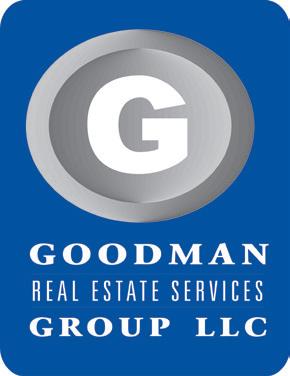
Key Contacts: Randy Goodman, President, Randy@goodmanrealestate.com; Richard Edelman, Senior Vice President/Principal, Richard@goodmanrealestate.com
Services Provided: At Goodman, we combine experience, technology, a large support team and hard work to provide exceptional service to its clients in national investment sales and financing, tenant and buyer site selection, property marketing, leasing, sales and disposition.
Company Profile: Goodman is a leading commercial brokerage firm based in Ohio specializing in national investment sales, tenant and buyer site selection with over 100 companies represented and marketing over 12 million square feet of retail properties for lease and development.
1440 Erie Street, Suite B North Kansas City, MO 64116
P: 816.213.9578
Website: shawvergroup.com
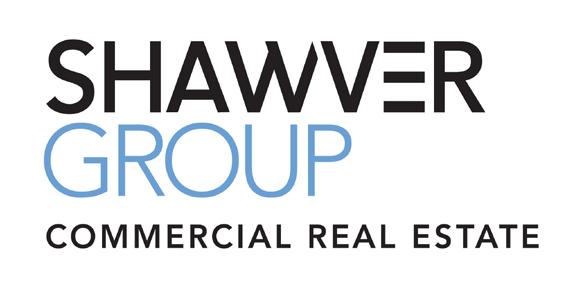
Key Contacts: Joanna Shawver, Principal and Founder, joanna@shawvergroup.com; Erin Green, Marketing and Operations Director, erin@shawvergroup.com
Services Provided: Shawver Group provides a variety of commercial real estate services for our clients and customers. Tenant representation, landlord representation, development leasing, investment sales, new store site selection, lease renewals and consulting services. We team with development companies and other real estate professionals to deliver successful results.
Company Profile: Shawver Group is a Kansas City-based commercial real estate brokerage firm delivering strategic solutions and successful client results across the Midwest in commercial leasing and sales transactions. Our industry connections, experience and lasting relationships create opportunities for our customers, clients, property owners, investors and developers.
9550 W. Higgins Road, Suite 400
Rosemont, IL 60018
P: 847.374.9200 • F: 847.374.9222
Website: meridiandb.com

Key Contact: Paul Chuma, President; Howard Green, Executive Vice President
Services Provided: Meridian Design Build provides construction and design/build construction services on a national basis with a primary focus on industrial, office, medical office, retail and food and beverage work.
Company Description: With a team of in-house professional project managers, Meridian has extensive experience coordinating the design and construction of new buildings, tenant improvements, and additions/renovations from 15,000 square feet to 1,000,000+ square feet. Meridian Design Build has been a Member of the U.S. Green Building Council since 2007. Notable/Recent Projects: Venture Park 47, Huntley, IL - 729,800 sf speculative industrial facility for Venture One Real Estate. Lion Electric, Joliet, IL - 928,500 sf electric bus / medium duty truck assembly plant for Clarius Partners. Greenwood Truck Terminal, Greenwood, IN125 door truck terminal on 43 acres for Scannell Properties.
9450 West Bryn Mawr Ave., Suite 120 Rosemont, IL 60018
P: 847.615.1515 | F: 847.615.1598
Website: pccdb.com

Key Contacts: Mark L Augustyn, COO, maugustyn@pccdb.com, James A.. Brucato, President, jbrucato@pccdb.com
Services Provided: Principle specializes in commercial and industrial property and is committed to providing clients with the highest level of design/build construction services with an absolute dedication to each project.
Company Profile: Design/Build General Contractor established in 1999 specializing in the design and construction of Build-to-Suit, Speculative, Retail, Food Processing, Expansions/ Additions, Tenant Improvements, & Specialty Facilities. Principle also has extensive experience in interior improvements, site evaluation, due diligence, and value engineering. Recently Completed Projects include:
• 282,588 SF dry-cleaning facility for Tailored Brands, at 2000 Deerpath Rd. in Aurora, IL.
• 31,200 SF facility for Alvil Trucking, at 2570 Millenium Dr. in Elk Grove Village, IL
• 6,200 SF Warehouse for Superfast Trucking, at 1001 Raddant Rd. in Batavia, IL
2000 Center Dr., Suite East C219 Hoffman Estates, IL 60192
P: 847.392.6900
Website: victorconstruction.com
Key Contact: Zak Schuttler, President, ZakS@victorconstruction.com
Services Provided: Victor Construction Co., Inc. manages projects from ground-up site developments to interior buildouts, specializing in retail, industrial, and commercial markets. Company Profile: Established in 1954, Victor Construction Co., Inc. is a third-generation general contractor that specializes in commercial, industrial, and retail construction. Victor Construction is known as one of the most efficient and dependable general contractors in the Chicago metropolitan area and has earned the reputation due to meticulous project management, cost-effectiveness, budget awareness, and prime first-rate workmanship. Commitment to the clients’ goals is what keeps satisfied customers returning to Victor Construction for all their construction needs-- We Build for Your Success!
ECONOMIC DEVELOPMENT CORPORATION OF MICHIGAN CITY
Two Cadence Park Plaza
Michigan City, IN 46360
P: 219.873.1211
Website: www.edcmc.com
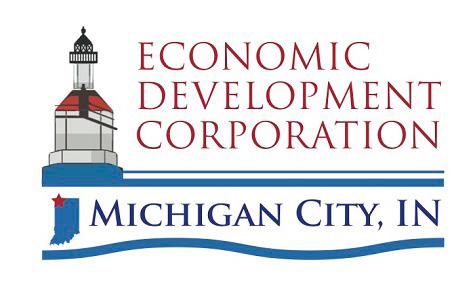
Key Contacts: Clarence Hulse, Executive Director, chulse@edcmc.com
Karaline Cartagena Edwards, Economic Development Manager, kcedwards@edcmc.com
Services/Demographic Info: Up-to-date inventory of commercial buildings, site selection and orientation tours
Incentives: Tax-Increment Financing, Façade Improvement Grants, Property Tax Abatements, Enterprise Zones, Job Training Programs
Recent CRE Activity: Double Track Northwest Indiana: $1.6 Billion development reducing train travel to Chicago to 60 minutes; The Franklin at 11th St. Station: $100 Million Development with Residential & Retail Space; “You are Beautiful”/SoLa: $311 Million MixedUse Multi-Family Development with 235 boutique hotel rooms & 174 Luxury Condos; Burn ‘Em Brewing: $3 Million Expansion project with 30 new jobs.
VILLAGE OF HUNTLEY
10987 Main Street
Huntley, IL 60142
P: 847-515-5268
Website: huntleyfirst.com, huntley.il.us

Key Contact: Melissa Stocker, Development Manager, mstocker@huntley.il.us
Services/Demographic Info: Huntley, a northwest suburban Illinois community of greater than 29,000 residents, is conveniently located at the crossroads of Interstate 90 and IL Route 47. Proximity to the interstate and to international and cargo airports in Chicago and Rockford make Huntley an ideal location for businesses looking to escape the congestion of more populated areas while reaping the benefits of a Chicago market location. Village of Huntley staff provides comprehensive services including site selection assistance and demographic resources, visit huntleyfirst.com to start the search for your new home for business. Residential construction continues with three subdivisions actively building. Huntley is home for your business, and home to the right employees for your business.
Population In Primary Trade Area: 97,283
Incentives: TIF District, Fast Track permitting and development approval process
CRE Activity: Huntley is home to leaders in business. Join Weber, Northwestern Medicine, Amazon and many others that chose Huntley as their home for business. Hampton Inn recently opened in Huntley. Amazon has begun operations in two Huntley facilities.
E-Logistics firm headquarters are underway. Speculative development is underway and available near the tollway. Multiple retail strip centers are in the planning and construction phases. With land available for custom-tailored facilities, businesses seeking sites recognize Huntley as a prime location for operations.
REINHART BOERNER VAN DEUREN S.C.
1000 N Water Street, Suite 1700 Milwaukee, WI 53202
P: 414.298.1000
Website: reinhartlaw.com

Key Contact: Joseph Shumow, Shareholder, jshumow@reinhartlaw.com
Services Provided: Reinhart is a full-service, business-oriented law firm that delivers innovative, value-added solutions for today’s most important real estate needs, including land use and zoning; tax incremental financing; tax credits; leasing; construction; and condemnation and eminent domain issues.
Company Profile: With the largest real estate practice in Wisconsin and offices throughout the Midwest and across the country, Reinhart’s attorneys offer clients customized real estate insight rooted in broad knowledge and deep experience to help you capitalize on opportunities no matter where you do business.
WORSEK & VIHON, LLP
180 North LaSalle Street, Suite 3010 Chicago, IL 60601
P: 312.917.2307 P: 312.917.2312 | F: 312.596.6412
Website: wvproptax.com

Key Contacts: Francis W. O’Malley, Managing Partner fomalley@wvproptax.com; Jessica L. MacLean, Partner jmaclean@wvproptax.com
Services Provided: Worsek & Vihon, LLP represents tax payers in Illinois by limiting their property tax liabilities through ad valorem appeals. We have over 40 years of experience and can handle basic to the most complex assessment issues while offering the dependable, personalized attention our clients deserve. We have experience representing owners of all property types. In addition to filing thousands of appeals with the Cook County Assessor, we have been involved in numerous proceedings before various Boards of Review, the Illinois Property Tax Appeal Board, and the Circuit Court of Illinois, and have appeared before the Illinois Appellate and Supreme Courts.
Company Profile: Worsek & Vihon LLP, is a team of experienced attorneys singularly focused on real estate tax law. The firm is dedicated to minimizing property tax liabilities through strategic tax portfolio management, well-researched, creative appeal preparation and aggressive advocacy.


